CHURCH OF SCIENTOLOGY TIMELINE
1911 (March 13): Lafayette Ron Hubbard was born in Tilden, Nebraska.
1938 (January 1): Hubbard claimed to have a near-death experience and wrote his “Excalibur” manuscript.
1950 (April): Hubbard and John Campbell formed the Hubbard Dianetic Research Foundation (HDRF).
1950: “Dianetics” was published in Astounding Science Fiction in May and then in book form as Dianetics: The Modern Science of Mental Health.
1950-1951: Dianetics practitioners began to report memories from past lives. Hubbard developed the idea of the thetan and past lives.
1951-1952: Hubbard began to use the E-meter in Dianetics auditing.
1952: Hubbard Association of Scientologists (HAS) was formed in Phoenix, Arizona.
1953: (December) Hubbard incorporated three “churches,” including the Church of Scientology.
1954 (February 18): The first church of Scientology opened in California.
1956: The Washington D.C. Church of Scientology was recognized as tax exempt.
1957: The Church of Scientology of California (CSC) was recognized as tax exempt.
1958: The IRS withdrew the Washington D.C. church’s tax exemption.
1963 (January 4): U.S. Marshals, acting on an FDA warrant, raided the Church of Scientology in Washington D.C.
1963: The IRS audit of Scientology began.
1966 (July): Hubbard began to develop the confidential Operating Thetan (OT) levels.
1967 (July 18): The IRS stripped the Church of Scientology of California of its tax exemption.
1968: The Sea Organization was formed.
1974-1975: Scientologists infiltrated IRS offices and stole thousands of documents.
1977 (July): The FBI raided Scientology headquarters in Washington, D.C. and Los Angeles.
1977 (October): Eleven Scientologists, including Mary Sue Hubbard, were convicted of conspiracy, L. Ron Hubbard went into hiding.
1985 (November): Confidential OT materials were leaked to Los Angeles Times.
1986 (January 24): Hubbard died at age 74.
1987: David Miscavige became Chairman of the Board of the Religious Technology Center.
1991 (October): Miscavige and Marty Rathbun held an unscheduled meeting with the IRS commissioner and offered to drop all lawsuits against the IRS in exchange for tax exemption.
1993 (October 1): The IRS granted tax exemption to all Scientology organizations in the U.S.
1995: Scientology was classified as a secte in France
1996: The Cult Awareness Network was driven into bankruptcy, and its name and files are taken over by Scientologists.
2007 (March): An initiative to ban Scientology began in Germany.
2008 (January 21): Anonymous released its Message to Scientology.
2009 (May): Wikipedia banned Scientology.
2009 (October): Scientology was convicted of fraud in France.
FOUNDER/GROUP HISTORY
The Church of Scientology was first incorporated in December 1953 in Camden, New Jersey. The church’s founder was Lafayette  Ron (L. Ron) Hubbard, [Image at right] who was born on March 13, 1911 in Tilden, Nebraska, the son of a U.S. naval officer. Beyond the date and place of his birth, however, there is little agreement about most other details of Hubbard’s biography, as the narratives provided by the Church of Scientology and those of its many critics are greatly at odds (Urban 2011:30-33; Urban forthcoming; Christensen 2005).
Ron (L. Ron) Hubbard, [Image at right] who was born on March 13, 1911 in Tilden, Nebraska, the son of a U.S. naval officer. Beyond the date and place of his birth, however, there is little agreement about most other details of Hubbard’s biography, as the narratives provided by the Church of Scientology and those of its many critics are greatly at odds (Urban 2011:30-33; Urban forthcoming; Christensen 2005).
According to his own accounts and official church biographies, Hubbard is portrayed as an adventurer who set out to explore not just the farthest ends of the earth but also the infinite reaches of the human mind, as much a “daredevil barnstormer, a master mariner [and] a Far East Explorer” as the founder of a revolutionary new philosophy (Friends of Ron 1995:102). As a young man, Hubbard claimed to have been initiated into the secrets of the Blackfoot Indians, then to have become the nation’s youngest Eagle Scout, and later to have traveled to Asia where he learned the esoteric teachings of various Eastern sages: “Among the first westerners… admitted into traditionally forbidden lamaseries”, he delved into the “dread mysteries of India,” studied with Buddhist priests and met “the last remaining magician for Kublai Khan’s court” (Hubbard 2009). Back in the United States, Hubbard claimed that he mastered the sciences, studying engineering and atomic physics at George Washington University. At one point, Hubbard claimed to have been “one of the first nuclear physicists in the United States,” an assertion that appeared on the cover of his book All About Radiation (1976:49). During World War II, Hubbard served as a naval lieutenant, commanding several vessels in various theaters. Scientology publications made various claims about his military achievements, some stating that he was awarded as many as twenty-nine decorations (Church of Scientology International 1994). Hubbard also claimed that the war had left him blind and a hopeless cripple, but that he had healed himself using the techniques that later became the basis of his new science of Dianetics (1973:10-11).
Virtually every detail of Hubbard’s biography however has been the subject of debate, and many critics argue that most if not all of this narrative is a fabrication. Skeptics have pointed out, for example, that most of Hubbard’s academic credentials are fictional. Hubbard, the alleged “nuclear physicist,” had only enrolled in one introductory course on molecular and nuclear physics at George Washington University, receiving a grade of F, while his Doctor of Philosophy degree turned out to be the product of a sham diploma mill called Sequoia University (Smith 2009). Far from a decorated war hero, Hubbard was actually investigated for firing on an uninhabited island in Mexican waters and was judged by Rear Admiral F. A. Braisted to be “not qualified for command or promotion” (Atack 1990:79-80; Mallia 1998). As journalist Lawrence Wright points out, there is also no evidence that Hubbard had ever been wounded in battle, much less healed himself (NPR 2011; Wright 2011).
As such, Hubbard’s autobiography is perhaps best understood not as an accurate historical chronicle; rather, as Dorthe Refslund Christensen suggests, it is better read as a kind of “hagiographic mythology:” that is, an idealized narrative composed self-consciously of mythic themes (2005:227-58). In this sense, it is comparable to the highly elaborated and often imaginative narratives of other new religious leaders, such as Madame Blavatsky, Elijah Muhammad or Joseph Smith. It is worth noting, however, that the Church of Scientology has revised many of the details of Hubbard’s biography in recent publications, leaving out some of the more implausible claims about his academic record and military decorations (Urban forthcoming).
Both critics and admirers of Hubbard do agree, however, that he was a tremendous storyteller and an incredibly prolific writer. During the 1930s and 1940s, Hubbard was among the most widely published authors of the Golden Age of science fiction, churning out hundreds of sci-fi, fantasy, and adventure tales under his own name and a variety of pseudonyms. More than one observer has also pointed out that there are numerous continuities between his science fiction tales and the elaborate cosmology of his later Scientology writings (Whitehead 1976; Urban 2011:33-37, 73-78).
Hubbard’s first encounter with the spiritual realm is described in an unpublished manuscript entitled “Excalibur,” composed in 1938. According to Hubbard’s account, the manuscript was the result of a near-death-experience that occurred during an operation while under heavy anesthesia. Passing through the curtain of death, Hubbard had a rare glimpse into the “secret of life” and heard a voice cry out “don’t let him know!” Upon returning to his body, Hubbard immediately sat down at his typewriter and hammered out the 10,000-word “Excalibur” manuscript ( Church of Scientology International 2012b; Urban 2011:37-39). This manuscript is said to be so profound that it has never been published in full. His literary agent at the time, Forrest Ackerman, also recounts this story, noting that Hubbard claimed that whoever read the “Excalibur” manuscript “either went insane or committed suicide” (Channel 4 Television 1997). At present, only brief excerpts of the manuscript are available on Scientology websites.
In the years before founding Dianetics and Scientology, Hubbard also briefly dabbled in occultism, magic and the supernatural. In early 1946, shortly after his service in World War II, Hubbard befriended John Whiteside (Jack) Parsons, a fellow science fiction enthusiast and rocket scientist. Parsons was also a follower of the most infamous occultist of the twentieth century, Aleister Crowley, and was engaged in some of Crowley’s most esoteric magical rites (Urban 2012; Pendle 2005). Together, Hubbard and Parsons performed some of Crowley’s more extreme magical rites, including sexual rites, which were described in detailed in Parsons’ magical diary from this period entitled The Book of Babalon. The Church of Scientology later downplayed this connection and claimed that Hubbard had been sent in on a special military mission to break up this black magic group (Urban 2012). Nonetheless, Hubbard would later praise Aleister Crowley in his Scientology lectures of the early 1950s, calling him “my very good friend,” and also drew direct parallels between magical rituals and Scientology practices (Hubbard 2007a:27; Urban 2012).
In May, 1950 Hubbard published his “new science of the mind” called Dianetics in an issue of the popular magazine Astounding Science Fiction. Derived from the Greek dia and nous meaning “through the mind,” Dianetics claimed to be a revolutionary new breakthrough for mankind, comparable to “the discovery of fire and superior to the wheel and the arch” (Whitehead 1987:52). Based on his experimentation with a wide array of philosophical, psychological and spiritual ideas, Hubbard believed that he had unlocked the secret to the working of the human mind, the cause of all physical and psychological problems, and the means to achieving an optimal state of wellbeing called “Clear.” Indeed, in an issue of Marvel Science Studies, Hubbard presented Dianetics 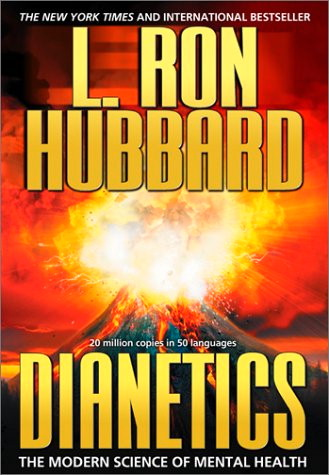 as the path to transcend the state of Homo sapiens and become a “Homo superior” or superman (1951). Published in book form later in 1950, [Image at right] Dianetics became surprisingly successful and went to the top of the New York Times bestseller list for twenty-eight weeks. The “Dianetics craze,” as journalists called it, spread like wildfire across the U.S., and many small, grassroots Dianetics clubs sprouted up throughout the country (Gumpert 1950).
as the path to transcend the state of Homo sapiens and become a “Homo superior” or superman (1951). Published in book form later in 1950, [Image at right] Dianetics became surprisingly successful and went to the top of the New York Times bestseller list for twenty-eight weeks. The “Dianetics craze,” as journalists called it, spread like wildfire across the U.S., and many small, grassroots Dianetics clubs sprouted up throughout the country (Gumpert 1950).
Although initially extremely popular, the early Dianetics movement proved to be a short-lived phenomenon and rapidly faltered just a year or two after its birth. The movement suffered a series of embarrassments in the media and growing tensions between Hubbard and early supporters such as John Campbell and Joseph Winter. Already by April 1951, Hubbard’s movement was facing financial difficulty and entered into voluntary bankruptcy in 1952 (Wallis 1976:79-80; Urban 2011:64-68).
In its place, however, Hubbard created the new Church of Scientology, which was now presented not just as a science of the mind but in fact as a “religion” in its own right (Urban 2011:57-88; Kent 1999). The reasons for the failure of the early Dianetics movement and the shift to the religion of Scientology were several. First, throughout the early 1950s, practitioners of Dianetics were being scrutinized by the FDA and by various state medical boards because of their claims to physical as well as psychological healing. Between 1951 and 1953, several individuals were arrested for practicing medicine without a license, and, in 1958, the FDA seized and destroyed a consignment of 21,000 tablets of Hubbard’s anti-radiation sickness drug, Dianezene, claiming that they were falsely labeled for treatment of real illness (Kent 1996; Urban 2011: 62-63). In response, Hubbard began to argue that the aim of his new therapy was not physical healing but rather spiritual freedom, and thus not subject to FDA scrutiny. Hubbard himself would later reflect that this was one of the main reasons “why Dianetics fell out of use” as a form of “healing” and Scientology as means to “spiritual freedom” took its place (Kent 1996; Urban 2011:63).
At the same time, practitioners of Dianetics had also begun to report memories from past lives in the course of auditing; this led Hubbard to explore the idea of an immortal spiritual self, what he called the “thetan,” and a belief in past lives going back thousands, millions and even trillions of years. Thus from the mid-1950s onward, Hubbard began to draw explicit parallels between his movement and the religious ideas of Hinduism and Buddhism, including the ideas of immortality, reincarnation and supernatural abilities (Hubbard 2009; Urban 2011:82-85; Kent 1996).
On April 10, 1953, Hubbard wrote a letter to Helen O’Brien, then the head of the Dianetics movement in Philadelphia. In it, he suggested that they should consider pursuing what he called the “religion angle,” since the current Dianetics movement “couldn’t get worse public opinion than we have had or have less customers with what we’ve got to sell” (Hubbard 1953; Urban 2011:65). Finally, in December 1953, Hubbard appears to have embraced the “religion angle” by incorporating the Church of Scientology along with two other churches in Camden, NJ. This was followed by the opening of a church in California in 1954 and the incorporation of the Founding Church of Scientology in Washington, D.C. in 1955. According to the founding church’s certificate of incorporation, this was explicitly meant to be religious organization, created to act as “a parent church for the propagation of the religious faith known as Scientology” (Urban 2011:65).
With its newly centralized organization and administration, the Church of Scientology expanded rapidly in the 1950s and 1960s, following a kind of “franchise” model that proved to be extremely successful. As the respected sociologist of religion, Bryan R. Wilson noted, Scientology combined the “precision of the Gautama Buddha with the productive practicality of Henry Ford” and quickly established new churches across the U.S., U.K. and Europe (1998:132). Other sociologists have compared Scientology’s rapidly growing and lucrative organizational structure to “multi-national enterprises such as the Ford Mother Corporation, Coca Cola or International Telephone and Telegraph” (Wallis 1976:124). By the end of the 1950s, Hubbard’s church was profitable enough to purchase Saint Hill Manor, an impressive eighteenth century building near East Grinstead in Sussex County, England. Previously owned by the Maharaja of Jaipur, Saint Hill became the headquarters of the expanding Scientology empire from 1959 until Hubbard’s departure in 1967.
As Scientology grew and expanded during the 1960s, Hubbard also added more and increasingly esoteric levels of training and organization. Beginning in 1966, Hubbard revealed a series of auditing levels called “Operating Thetan” (OT) in which the thetan or spiritual self is believed to achieve ever-greater freedom from the material world and ever-greater spiritual powers. These OT levels were intended to be highly confidential and only released to Scientologists who had passed through the required levels of auditing, although, as we will see below, they were all eventually leaked to the media and now circulate widely on the Internet (Rothstein 2010; Urban 2011:100-05). The church lists fifteen OT levels in its current roadmap of the Scientology path, “The Bridge to Total Freedom,” though only eight of these appear to have been completed by Hubbard before his death.
At roughly the same time, in 1968, Hubbard also created the Sea Organization or Sea Org, which is the elite, innermost, dedicated core of Scientologists. Modeled on a naval organization, the Sea Org was initially formed to accompany Hubbard on his vessel, the Apollo. Members of the Sea Org sign a “billion year contract,” vowing to come back lifetime after lifetime to assist in Hubbard’s mission to spread Scientology and ultimately to create a “new civilization on this planet. Indeed, the Sea Org was presented in Scientology publications as the only means to save the human race from nuclear war and “the terror of total destruction” (Urban 2011:124; Many 2009). Today, the Sea Org is largely a land-based order centered in Clearwater, Florida, and there is presently only one working vessel, the Freewinds; but Sea Org members continue to wear naval uniforms and maintain strict military discipline. According to the Church of Scientology, the tight discipline of the Sea Org is analogous to a Christian or Buddhist monastic order (Church of Scientology International 2012d; Melton 2001). In the eyes of critics and many ex-members, however, the Sea Org is a manipulative cult that controls, surveils, and manipulates members in a way that borders on brainwashing (Kent 1997; Many 2009; Goldstein 2010; Raine 2009).
In the early 1970s, Scientology also began to attract a wide array of celebrities, who have since served as influential spokespersons, advocates and defenders of the church. Plans to attract celebrities had been suggested as early as the mid-1950s (Urban 2011:150), but in the early 1970s the church began to build a series of opulent Celebrity Centers in Hollywood and around the world specifically catering to actors, musicians, artists and entertainers (Church of Scientology Celebrity Centre International 2012). The church’s more prominent celebrity advocates have included: actors John Travolta, Tom Cruise, Kirstie Alley, and Nancy Cartwright; musicians Isaac Hayes and Chick Cora, and (formerly) director Paul Haggis (Wright 2011; Reitman 2011).
One of the most complex and convoluted chapters in the history Scientology is the intense debate over its status as a “religion” and specifically over its claims to tax-exemption as a non-profit religious organization in the eyes of the U.S. Internal Revenue Service (and other government agencies in other nations). This battle with the IRS, which would later be dubbed “THE WAR” by current Scientology head David Miscavige (1993), first began in the mid-1950s. Hubbard’s movement initially had little trouble winning tax-exempt status, which was awarded to Scientology churches in 1956 and 1957; yet already by 1958 the IRS had begun investigating Scientology and concluded that most of the revenue was benefiting Hubbard and his family personally. Tax exemption was revoked again in 1967, which then led to a series of lawsuits and to a massive twenty-five-year battle with the IRS that involved hundreds of lawyers and literally thousands of lawsuits (Urban 2011:155-77; Frantz 1997; McDonald 1997; Reitman 2011:166-71). During this period, Hubbard also explicitly emphasized the “religious” nature of Scientology. In what the LA Times called Scientology’s “most sweeping religious makeover,” Hubbard gave clear directives that “visual evidences that Scientology is a religion are mandatory.” Scientology franchises became “missions,” and the display of clerical collars and crosses became strictly enforced (Sappell and Welkos 1990a; Hubbard 1969; Urban 2011:155-77).
One of the more bizarre episodes in the church’s war with the IRS was a plan called “Operation Snow White,” which was launched by Hubbard’s wife, Mary Sue, and the church’s intelligence bureau, the Guardian’s Office (GO). Devised in early 1973, Operation Snow White involved GO agents infiltrating offices of the IRS and other government agencies in order to steal thousands of documents relating to Scientology. GO agents also wiretapped IRS offices during meetings in which Scientology was discussed. When the operation was uncovered in 1977, the FBI launched the largest raid in the Bureau’s history, sending 134 agents into Scientology offices in Washington D.C. and Los Angeles and confiscating over 200,000 documents and other materials (Robinson 1977; Sentencing Memorandum 1980). Mary Sue and eleven other Scientologists were arrested, tried and convicted, while Hubbard was named unindicted co-conspirator and spent the remainder of his life in hiding. Hubbard died on January 24, 1986 at a ranch in California, where he had been living in a Bluebird motor home. Official statements by the church pronounced that he had left this world to move to a higher plane and continue his spiritual research “on a planet a galaxy away” (Sappell and Welkos 1990b).
The church’s war with the IRS, meanwhile, was not resolved until 1993, following a private meeting between Miscavige, Marty Rathbun and IRS head, Fred T. Goldberg, Jr. Although the precise details of this agreement have never been fully revealed, the church agreed to pay back taxes of $12.5 million in exchange for an impressive blanket tax exemption of all Scientology-related entities in the United States (McDonald 1997). This blanket exemption, remarkably, includes not only religious entities within the Scientology empire, but also seemingly quite “secular” entities that have nothing to do with religion, such as Galaxy Press, which reprints Hubbard’s science fiction and fantasy stories. Shortly after the church’s victory with the IRS, the U.S. State Department also began to recognize Scientology in its annual reports on religious freedom and to criticize other governments for their harsh treatment of the church (Urban 2011:175).
Despite its triumph in the United States, Scientology has continued to face numerous challenges in many other countries, particularly in France, Germany, Russia, Australia and the UK. Scientology was the subject of withering government reports in both Australia and the UK in the 1960s and 1970s, and it continues to be viewed with intense suspicion in France and Germany. French courts, which regard Scientology as a secte (= cult) and not as a religion, convicted Scientology of fraud in October, 2009; and as recently as 2007, German federal and state interior ministers undertook a move to ban the church (CNN 2009; Urban 2011:201).
DOCTRINES/ BELIEFS
The beliefs of the early Dianetics movement focused primarily on Hubbard’s understanding of the human mind and the cause of suffering in this lifetime. Hubbard’s saw the mind as having two main parts: the reactive mind, which is roughly analogous to Freud’s unconscious, and the analytical mind, which sees the world accurately like a flawless computer. Throughout life, individuals have negative experiences of pain and unconsciousness that become burned in the reactive mind in the form of what Hubbard called “engrams” or negative memory traces, which cause us both physical and psychological problems (Hubbard 1950, 2007c). Through the Dianetics technique called “auditing” (see below) these engrams can be progressively identified, relived and removed from the reactive mind until the individual achieves a state of optimal well-being called “Clear” (2007c:113).
With the birth of the Church of Scientology, however, Hubbard began to incorporate much more explicitly “religious” ideas that extended well beyond the individual human mind and this particular lifetime. In the course of Dianetics auditing, many individuals began to report memories from previous lives, and Hubbard soon incorporated the idea of past lives. At the same time, he developed the ideas of “theta” (spirit) and the “thetan” (the individual spiritual self or true, eternal identity of a person [1975a:429-32]). As he argued in lectures of the early 1950s, Scientology in this regard has much in common with eastern religions, particularly Hinduism and Buddhism, which are its closest spiritual kin (Hubbard 2007d:34).
Hubbard also introduced the idea of the “Eight Dynamics,” or the urge that all beings have to survive on eight levels of existence, which are symbolized by the eight points of the Scientology cross. These include the desire to survive as an individual, as a family, as a group, as a species, as all life forms, as the physical universe, as a spiritual entity, and finally as Infinity, God or the Supreme Being. However, Hubbard was always reluctant to say much about this eighth dynamic or Supreme Being, even making a point to state that “it is carefully observed that the science of Scn does not intrude into the dynamic of the Supreme Being” (1975a:129).
Hubbard did have quite a lot to say, however, about the thetan, its past history and its ultimate potential. In its original form, the thetan was an inherently infinite and even “godlike celestial entity,” that originally had its own “Home Universe” created by its own free will (Bromley 2009:91; Hubbard 1975a:431). But for reasons that remain somewhat unclear, the thetan has become mistakenly trapped in this present universe of matter, energy, space, and time (MEST). The thetan has had countless past lives in this universe, including numerous life forms on earth, such as clams, birds, sloths, apes, etc (1968:47); but it has also had numerous adventures on other planets among various aliens life forms, what Hubbard called “space opera.” While most Scientologists today downplay these space opera themes, they are pervasive throughout Hubbard’s early lectures of the 1950s (Hubbard 1958, 1985, 1990, 2007a, 2007b). Based on his extensive auditing, Hubbard believed that he had reconstructed the “Whole Track” or the entire history of the universe and the thetan’s various adventures from the time they first “hit the time track” 60,000,000 years ago. These include not only space opera episodes among ancient civilizations on earth (Atlantis, Egypt, etc.) but also on various other planets and among alien civilization such as Arsclycus (a “city in space”), the Marcab Confederacy, and so on (Hubbard 1985, 2007a; Urban 2011:73-78).
Some of Scientology’s beliefs about the origin of the universe are confidential materials that are only revealed in the advanced levels of auditing called “Operating Thetan” (OT). As such, they were originally not meant to be publicly available but accessible only to Scientologists who have passed through all of the preceding levels of auditing. Despite the intense secrecy surrounding them, the OT levels eventually became part of the court record in two lawsuits during the 1980s and were leaked first to the media and then onto the Internet where, despite numerous legal battles, they now circulate freely (Rothstein 2009; Urban 2011:102-05, 178-200). Perhaps the most infamous material in these advanced grades is contained in OT level III (which was also savagely mocked on the animated TV show “ South Park”). The basic outline of the story runs as follows: 75,000,000 years ago there was a Galactic Confederacy consisting of seventy-six planets, ruled by a dictator named Xenu (or Xemu in some versions). In order to solve the problem of overpopulation in his confederacy, Xenu brought billions of people to Earth (then called “Teegeeack”) and placed hydrogen bombs in Earth’s volcanoes to destroy them. The thetans from these individuals, however, survived and eventually adhered to the bodies of modern human beings. Thus, each one of us today has a mass of “extra-body thetans” stuck onto ourselves, which are in turn causing us pain and unhappiness in this lifetime (Urban 2011:103; Whitehead 1987:185; Rothstein 2009).
Although the media has made a great deal of the Xenu story, it is important to note that it is a relatively small part of the larger Scientology belief system and not a concern for most ordinary Scientologists. Moreover, the Xenu story is really quite unremarkable when compared to the more elaborate space opera narratives contained in Hubbard’s publicly available lectures from the early 1950s.
RITUALS/PRACTICES
The central practice in Dianetics and Scientology is the unique form of therapy called “auditing” (from Latin auditus, to hear). The practice involves a trained counselor (the “auditor”) who works with an individual to help identify the painful memory traces (engrams) that have been burned into the reactive mind. Through auditing, the individual can relive these experiences and then clear them from the reactive mind. In the early Dianetics system, auditing focused on identifying and clearing engrams from this present life, some going back to the pre-natal state, in order to achieve the state called “Clear.” An individual who is “Clear” has removed all the engrams from his reactive mind and is claimed to achieve a state of optimum physical and psychological well-being, including total memory recall, higher IQ, and greater creativity (Hubbard 2007d:227).
To aid in the auditing process, Hubbard began to use a device called the E-meter (electro-psychometer). The first versions of the E-meter were developed by Volney Mathison, a chiropractor and author of paranormal and science fiction books. After a falling-out  with Mathison in 1954, Hubbard devised his own modification of Mathison’s E-meter, which has undergone various upgrades and is still used to this day. The E-meter [Image at right] works somewhat like a lie-detector, operating as a skin galvanometer that measures fluctuations in the passage of a trickle of electricity through the body. The primary component of the meter is an instrument called the Wheatstone Bridge, which measures changes in electrical resistance. The individual undergoing auditing holds two cylinders that are connected by wires to the meter, while the auditor asks a series of questions in order to identify where specific engrams lie. Once the engram has been identified and cleared from the reactive mind, the needle of the meter is supposed to “float,” which indicates that the individual no longer reacts to that painful memory (Whitehead 1987:142-43).
with Mathison in 1954, Hubbard devised his own modification of Mathison’s E-meter, which has undergone various upgrades and is still used to this day. The E-meter [Image at right] works somewhat like a lie-detector, operating as a skin galvanometer that measures fluctuations in the passage of a trickle of electricity through the body. The primary component of the meter is an instrument called the Wheatstone Bridge, which measures changes in electrical resistance. The individual undergoing auditing holds two cylinders that are connected by wires to the meter, while the auditor asks a series of questions in order to identify where specific engrams lie. Once the engram has been identified and cleared from the reactive mind, the needle of the meter is supposed to “float,” which indicates that the individual no longer reacts to that painful memory (Whitehead 1987:142-43).
The more elaborate practices of Scientology, begin with the basic form of auditing described in Dianetics but eventually delve into the more complex understanding of the thetan, its past lives and its infinite potential. The ultimate goal of Scientology auditing, then, is not simply to remove the engrams form this present lifetime in order to achieve the “Clear” state but also to unleash the unlimited power and potential of the thetan. Beyond the level of Clear, the Scientologist ascends through the more esoteric OT levels, in which the thetan has increasing freedom from and mastery over the MEST universe. Ultimately the thetan is believed to acquire various “super powers,” such as telepathy, clairvoyance, physical healing and “remote viewing” or seeing things at great distances, a paranormal ability also explored by the CIA during this time (Urban 2011:112-15). Hubbard also wrote extensively about the thetan’s ability to “exteriorize” or leave the physical body and travel at will throughout the universe (2006:115, 1975a:279), which has much in common with the concept of astral travel discussed by Crowley and other occultists of the early twentieth century (Urban 2012). At the Scientology center in Clearwater, Florida the church has also begun construction of a huge (and hugely expensive) “Super Power Building” adjacent to its Fort Harrison Hotel. According to Scientology’s Source magazine, the Super Power building is “an entirely New Universe” and ideal in every detail: “Expanding on technology developed by NASA astronauts, it’s now combined with everything else they never conceived of in terms of space.” Photos of the interior of the building feature space age looking rooms with large shiny orbs and a GyroSpin device (Source 2007:40-1; Urban 2011:112-15).
In addition to auditing, however, Scientology offers a variety of other services that are analogous to and/or modeled upon those of mainstream Christian churches. These include free Sunday services that are open to the public, as well as marriages, funerals, and other rites that resemble Christian practices (Church of Scientology 1998). The Church of Scientology does also celebrate a number of holidays throughout the year; among these are Hubbard’s birthday (March 13), the date marking the first publication of Dianetics (May 9), the anniversary of the maiden voyage of the Scientology vessel, the Freewinds (June 6), and Auditor’s Day, in honor of all auditors (second Sunday in September) (Church of Scientology International 2012c).
ORGANIZATION/ LEADERSHIP
The organization of the Church of Scientology has a long, convoluted and extremely complicated history. The early Dianetics movement was first organized as the Hubbard Dianetic Research Foundation (HDRF). However, the HDRF went bankrupt in 1952 and was replaced by the Hubbard Association of Scientologists (HAS) and then by the Hubbard Association of Scientologists International (HASI). In 1981, the Church of Scientology International (CSI), also known as the Mother Church, was formed; and this was followed in 1982 by the Church of Spiritual Technology (CSI), which owns all copyrights on the estate of L. Ron Hubbard, and then by the Religious Technology Center (RTC). While the RTC claims only to be the ”holder of Dianetics and Scientology Trademarks,” it is the most powerful executive organization within the Scientology empire, and its current chairman, David Miscavige, is widely recognized as the effective head of the church (Religious Technology Center 2011; Childs and Tobin 2009).
Today, what we call “Scientology” is in reality a remarkably complex network of ostensibly independent but clearly interconnected corporate entities. These include not only the many individual churches (or “outer orgs”) but also publishing houses, such as Bridge Publications and Golden Era Productions, as well as various groups and services, such as World Institute of Scientology Enterprises (WISE), Scientology Missions International (SMI), the Citizens’ Commission on Human Rights (CCHR), and Foundation for Religious Freedom (FRF), as well as drug and criminal rehabilitation programs such as NARCONON and CRIMINON, among many, many others (Urban 2011:131). As such, the Church of Scientology is perhaps best understood not simply as a “religion,” but rather as a complex, multifaceted multinational corporation of which religion is simply one aspect (Kent 1999).
ISSUES/ CHALLENGES
Since the first publication of Dianetics in 1950 and down to the present, Hubbard’s movement has raised a series of controversies and faced serious challenges from a variety of government agencies, journalists, anti-cult groups and ex-members. Several of these, such as its wars with the IRS and FDA, have already been discussed in the preceding sections. For the sake of brevity, this profile will focus on just five other important issues surrounding the church.
1. Is it a “religion”? Much of the debate surrounding Scientology has focused on its claim to being a “religion” and its recognition as such in the eyes of government entities in the U.S. and around the world. Since the mid-1950s, and above all since the late 1960s, the church has argued fiercely that it is a bona fide religion, putting out numerous books and magazines to prove the point and also enlisting various scholars of religion in its defense. In 1969, the church launched Advance! magazine, most of whose issues were devoted to a particular world religion and the suggestion that Scientology was the fulfillment and completion of that particular religion (Urban 2011:165). Then in 1998, the church published a large, slickly produced book that quoted numerous scholars from around the world, most prominently, British sociologist of religion, Bryan R. Wilson, all arguing that Scientology is a legitimate religion (Church of Scientology 1998).
Meanwhile, from its first incorporation as a “church,” Scientology’s religious status has been challenged by various critics. Particularly during the “cult scares” of the 1980s, Scientology has widely been viewed by ant-cult activists and the media not as a real “religion” but rather as a dangerous “cult” and even as the quintessential “cult of greed” (Behar 1991). Alternatively, because of its lucrative financial structure and the high fees it charges for auditing, Scientology has been described by some legal scholars as a kind of “deviant business” (Passas and Castillo 1992). Hubbard stated quite explicitly that one of the aims of Scientology is to “MAKE MONEY,” and the costs of Scientology auditing run into the hundreds of thousands of dollars in the advanced OT levels (Hubbard 1975b:384; Urban 2011:133-36). As such, the church seems to straddle the fuzzy boundary between tax-exempt religion and for-profit business (Passas and Castillo 1992). And still other scholars have described Scientology as a kind of “simulacrum of religion,” that is, an imitation of a religion that simply adopts the outward trappings of crosses, ministerial collars, religious jargon, etc in order to win tax exemption and the other benefits that come with religious status (Urban 2011:17). Finally, some scholars have suggested that Scientology might be best understood as a complex “multifaceted transnational” akin to multinational corporation of which religion is one, but only one, of its many components (Kent 1999). In any case, whether we decide to describe Scientology as a religion, cult, business, or simulacrum, this movement represents an unusually clear “test case” for thinking about the complex question of what religion is, who defines it, and what is at stake in calling something a “religion” (Urban 2011).
2. Scientology vs. Critics and the Media. From its inception in the early 1950s, Dianetics was widely attacked in the mainstream media, both in the U.S. and abroad. Hubbard’s science of the mind was frequently mocked as a kind of poor man’s psychoanalysis or a “fantastic absurdity” (Gumpert 1950) and was soon under investigation by the FDA, IRS and various foreign governments. And in turn, Scientology has become infamous for its use of aggressive legal and sometimes extra-legal measures in order to respond to its critics in the media. As Hubbard put in his 1959 Manual of Justice, “People attack Scientology; I never forget it, always even the score” (1959:1). In the mid-1960s, this aggressive strategy toward critics was known as “fair game,” meaning that opponents of Scientology could be confronted by any all means at the church’s disposal; indeed, they may be “tricked, sued or lied to or destroyed” (Hubbard 1967; Urban 2006; Kumar 1997).
Although the use of the specific phrase “fair game” was officially discontinued for PR reasons in 1968, many critics of the church continued to be treated in extremely aggressive ways. Thus in 1971, journalist Paulette Cooper published a scathing exposé entitled The Scandal of Scientology. In response, the church’s Guardian’s Office launched a plan called “Operation Freakout” whose stated aim was to get Cooper “incarcerated in a mental institution or jail, or at least list hit her so hard that she drops the attack” (Sentencing Memorandum 1980:20-1). Similar tactics were used against journalist Richard Behar while he was researching his Time 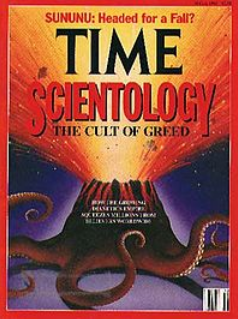 magazine article, “the Thriving Cult of Greed and Power.” [Image at right] According to Behar’s account, “at least ten attorneys and six private detectives were unleashed by Scientology and its followers in an effort to threaten, harass and discredit me…A copy of my personal credit report – with detailed information about my banks accounts, home mortgage…– had been illegally retrieved” (1991:57). A wide array of other journalists, academics and even ordinary college students have reported similar experiences with the church and its lawyers (Urban 2011:11-13, 109-12).
magazine article, “the Thriving Cult of Greed and Power.” [Image at right] According to Behar’s account, “at least ten attorneys and six private detectives were unleashed by Scientology and its followers in an effort to threaten, harass and discredit me…A copy of my personal credit report – with detailed information about my banks accounts, home mortgage…– had been illegally retrieved” (1991:57). A wide array of other journalists, academics and even ordinary college students have reported similar experiences with the church and its lawyers (Urban 2011:11-13, 109-12).
3. Scientology vs. the anti-cult movement. During the 1960s and 1970s, Scientology was widely criticized as one of the most dangerous “cults” in America and became a central part of the larger “cult scare” of the 1980s (Bromley and Shupe 1981). Indeed, Cynthia Kisser of the Cult Awareness Network (CAN) branded Scientology as “the most ruthless, the most classically terroristic, the most litigious and the most lucrative cult the country has ever known” (Behar 1991). In response, the church attacked CAN as a bigoted, intolerant organization with a Nazi-like attitude and filed numerous lawsuits against the group. Eventually, CAN was forced in to bankruptcy in 1996 as a result of a lawsuit brought against it by Jason Scott. Scott was not himself a Scientologist but rather a member of the Pentecostal Life Tabernacle Church; however, he was represented in the suit by Kendrick Moxon, a prominent Scientology official and lawyer (Moxon, in fact, had also been named as an unindicted co-conspirator in the infamous “Operation Snow White” infiltration of the IRS offices in the 1970s [Hansen 1997]). After CAN had been forced into bankruptcy, the network’s logo, furniture, and phone number were auctioned off and subsequently purchased by Stephen Hayes, another Scientologist, who outbid Kisser and won the remainder of CAN’s assets. Jason Scott later sold his settlement to Gary Beeney, also a Scientologist and represented by Moxon, making him CAN’s largest creditor. Beeney in turn donated CAN’s extensive files and records to the Foundation for Religious Freedom, which is itself, according to the 1993 IRS settlement, owned by the Church of Scientology. CAN was subsequently renamed the New Cult Awareness Network and continues to operate to this day under the Scientology umbrella. Ironically, then, the entity that once attacked Scientology as the world’s most dangerous cult is now effectively owned and operated by the Church of Scientology (Russell 1999; Hansen 1997; Urban 2011:150-51).
4. Scientology and the Internet. Perhaps Scientology’s greatest challenges and most intense battles have occurred in cyberspace (Cowan 2004; Fearer 1998; Brill and Packard 1997; Urban 2011:178-200). Ironically, no sooner had the church won its wars against the IRS and the Cult Awareness Network than it faced a new and more difficult war on the Internet. Most of its challenges in cyberspace began after the leak of the confidential OT materials and the Xenu story, which first appeared in court testimonies during the 1980s and then appeared online in the 1990s. The primary guardian of the church’s copyrights on the Internet has been the Religious Technology Center, which has engaged in several massive lawsuits with a variety of websites. One of the first and most prominent cases (among many) was the church’s lawsuit against former Scientologist Larry Wollersheim, who co-founded the website FACTNet.org and posted thousands of documents, including the OT materials, online. In August, 1995, a federal court ordered a raid on Wollersheim’s home, led by U.S. Marshals and RTC representatives, which resulted in the confiscation of all of his computers, software, and dozens of boxes of paper files. This in turn sparked an intense debate over copyright protection, trade secrets and free speech both on the Internet and in public spaces. The church’s lawyers argued that Wollersheim and his kind were “spreading lawlessness on the Internet” by violating religious privacy and the church’s copyright materials, while Wollersheim and his defenders argued that the church had violated his own rights to free speech (Brill and Packard 1997; Fearer 1998:352). This and other cases regarding Scientology and the Internet have generated intense debates surrounding the First Amendment, and specifically the tension between the ideals of free exercise of religion and freedom of speech (Brill and Packard 1997; Fearer 1998; Urban 2011:178-200).
Another major conflict in cyberspace occurred between Scientology and the world’s largest online encyclopedia, Wikipedia.com. In May, 2009, Wikipedia’s arbitration council voted 10-0 to ban any users coming from any IP address owned by the Church of Scientology. This unprecedented action was taken because the church had been found to have repeatedly and deceptively edited hundreds of articles relating to Scientology, thus “damaging Wikipedia’s reputation for neutrality” (Singel 2009). Tracing all the edits coming from Scientology machines was particularly difficult because numerous editors worked from a small number of IPs, and the address of each editor was constantly changing. This tactic, known as “sock-puppeting,” is not allowed in Wikiland (Metz 2009).
Finally, perhaps the church’s greatest challenge of the twenty-first century has come from an unlikely source, the decentralized, faceless, 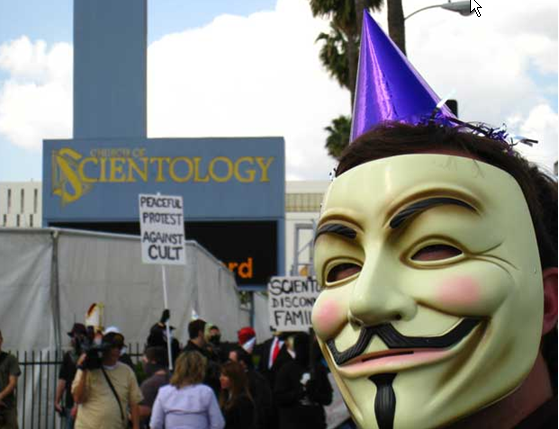 and anarchic network of Internet users that calls itself Anonymous. The Anonymous collective first began to target Scientology in early 2008, [Image at right] following the leak of a confidential video featuring Tom Cruise. The video, in which Cruise appears even more intense than usual, appeared on YouTube on January 15, 2008 and was viewed millions of times, but it was quickly removed from the site after threats of litigation by the church. Scientology’s threats against YouTube became a powerful catalyst for the Anonymous collective, which saw these actions as dangerous attacks on free speech and the open flow of information online. On January 21, 2008, Anonymous released a video of its own entitled Message to Scientology, which also spread virally online. The message features an electronically masked voice delivering a merciless critique and a chilling promise to “destroy” the church. Not long after the message was released, Anonymous members began to confront the church in both cyberspace and physical space, launching cyber attacks on Scientology websites and also staging large protests outside Scientology centers around the world (Seabrook 2008; Landers 2008; Urban 2011:191-96). Often wearing Guy Fawkes masks from the movie V for Vendetta, Anonymous protesters typically carry signs such as “$cientology Kills” and “Religion is Free: Scientology is Neither” and have been active worldwide, from Clearwater to Copenhagen to Columbus, OH. The church, in turn, has denounced Anonymous in the strongest possible terms as a “group of cyberterrorists” who “perpetrate hate crimes” against a religious organization (Urban 2011:193).
and anarchic network of Internet users that calls itself Anonymous. The Anonymous collective first began to target Scientology in early 2008, [Image at right] following the leak of a confidential video featuring Tom Cruise. The video, in which Cruise appears even more intense than usual, appeared on YouTube on January 15, 2008 and was viewed millions of times, but it was quickly removed from the site after threats of litigation by the church. Scientology’s threats against YouTube became a powerful catalyst for the Anonymous collective, which saw these actions as dangerous attacks on free speech and the open flow of information online. On January 21, 2008, Anonymous released a video of its own entitled Message to Scientology, which also spread virally online. The message features an electronically masked voice delivering a merciless critique and a chilling promise to “destroy” the church. Not long after the message was released, Anonymous members began to confront the church in both cyberspace and physical space, launching cyber attacks on Scientology websites and also staging large protests outside Scientology centers around the world (Seabrook 2008; Landers 2008; Urban 2011:191-96). Often wearing Guy Fawkes masks from the movie V for Vendetta, Anonymous protesters typically carry signs such as “$cientology Kills” and “Religion is Free: Scientology is Neither” and have been active worldwide, from Clearwater to Copenhagen to Columbus, OH. The church, in turn, has denounced Anonymous in the strongest possible terms as a “group of cyberterrorists” who “perpetrate hate crimes” against a religious organization (Urban 2011:193).
5. Ex-members, Allegations of Abuse and the “Scientology Reformation.” Finally, some of the greatest challenges facing the church have come from a long line of ex-members who accuse Hubbard and his movement with a staggering array of charges ranging from fraud and deception to violence and human rights abuses. Ex-member accounts began to appear even in the early 1960s (O’Brien 1966) but did not become widely known until the 1980s, with the severe attacks from Hubbard’s son, L. Ron Jr. and an array of exposés by former members (Miller 1988; Atack 1990). Since 2008, a flood of ex-member accounts began to appear. Ex-members have charged the church not only with fraud, but also with a wide array of aggressive, abusive and illegal practices (Armstrong 1999; Many 2009; Headley 2010; Rathbun 2012; Childs and Tobin 2009).
One of the most controversial aspects of the church is its Rehabilitation Project Force (RPF), which was first established within the Sea Org in the early 1970s in order to discipline members found guilty of deviating from the Org’s norms. Eventually, RPF centers were created at major Scientology centers in Los Angeles, Clearwater, London and Copenhagen. Defenders of the church and more sympathetic scholars have described the RPF as analogous to a “monastic retreat,” where devoted members can find a quiet respite to deal with spiritual problems (Melton 2001). Critics of the church, conversely, have argued that the RPF bears less resemblance to a monastic retreat than it does to an unusually brutal prison or even “a Chinese Ideological Re-Education Center” (Armstrong 1999; Many 2009). Some more critical scholars have charged that the RPF involves actual human rights abuses, such as forcible confinement, physical maltreatment, demanding chores, poor diet and inadequate medical care ( Kent 1997).
Another controversial practice often highlighted by ex-members is “disconnection,” which involves the complete severance of all ties between a Scientologist and any family, friends or colleagues who are considered to be antagonistic to the church. In some cases, disconnection has involved the separation of children from parents and spouses from one another. The church has defended disconnection as a spiritual practice that is necessary in some cases for personal growth; and some scholars have defended the practice as analogous to “shunning” (Church of Scientology International 2013). Critics and ex-members, however, have argued that the practice is extreme, coercive and psychologically destructive (Atack 1990:35-36, 319-320; Many 2009; Headley 2010).
Beginning in 2009, a new series of even more damning charges was brought forward by Marty Rathbun, who had served as the Inspector General of the Religious Technology Center and as a close associate of current church head David Miscavige. In a long set of interviews with the Tampa Bay Times, Rathbun had truly shocking tales to tell about Miscavige’s alleged violence and abuse, which included not just accounts of physical beatings but even more bizarre behavior. In one of the more surreal episodes, Miscavige allegedly forced top executives to play a brutal all-night game of musical chairs to the tune of Queen’s “Bohemian Rhapsody” (Childs and Tobin 2009). Still loyal to Hubbard’s legacy, however, Rathbun has called for a “Scientology Reformation” that would clean up the corruption in the church and restore the original message of its founder (2012).
Today, the Church of Scientology claims that its members number in the millions and that it is the “world’s fastest growing religion” (2004). However, most polls of religious affiliation suggest otherwise. According to the American Religious Identification Survey, Scientology’s numbers in the U.S. were not only nowhere near the level claimed by the church but also had fallen significantly from 55,000 in 2001 to 25,000 in 2008. Even scholars who are sympathetic to the church note that its numbers are probably much exaggerated (Goldstein 2010; Urban 2011: 206). Meanwhile the challenges facing the church from ex-members, would-be reformers, journalists, various governments and critics on the Internet have by no means abated but grown more intense in the last decade.
IMAGES
Image #1: Lafayette Ron (L. Ron) Hubbard.
Image #2: Cover of Dianetics: The Modern Science of Mental Health.
Image #3: Photograph of an E-meter.
Image #4: Cover of Time Magazine’s issue containing the story, “Scientology: The Cult of Greed,” written by Richard Behar.
Image #5: A protest by Anonymous outside of a Scientology facility.
REFERENCES
Armstrong, Gerry. 1999. “Gerry Armstrong Describes Experiences on the RPF.” Accessed from Scientology-lies.com. http://www.scientology-lies.com/gerryarmstrong5.html on 15 January 2013.
Atack, Jon. 1990. A Piece of Blue Sky: Scientology, Dianetics and L. Ron Hubbard Exposed. New York: Carol.
Behar, Richard. 1991. “The Thriving Cult of Greed and Power.” Time, May 6:50-57.
Brill, Ann and Ashley Packard. 1997. “Silencing Scientology’s Critics on the Internet: A Mission Impossible?” Communications and the Law 19: 1-23.
Bromley, David. 2009. “Making Sense of Scientology: Prophetic, Contractual Religion.” Pp. 83-102 in Scientology, edited by James R. Lewis. New York: Oxford University Press.
Bromley, David and Anson D. Shupe, Jr. 1981. Strange Gods: The Great American Cult Scare. Boston: Beacon Press.
Channel 4 Television. 1997. Secret Lives: L. Ron Hubbard. November 19. Accessed from http://www.lermanet.com/lies/tv4uk.html on 15 January 2013.
Childs, Joe and Thomas C. Tobin. 2009. “The Truth Rundown.” Tampa Bay Times. Accessed from http://www.tampabay.com/specials/2009/reports/project/part1.shtml on 15 January 2013.
Christensen, Dorthe Refslund. 2005. “Inventing L. Ron Hubbard: On the Construction and Maintenance of the Hagiographic Mythology of Scientology’s Founder.” Pp. 227-58 in Controversial New Religions, edited by James R. Lewis and Jesper Aagaard Petersen, New York: Oxford University Press.
Church of Scientology . 1994. The Church of Scientology: An Overview of the World’s Fastest Growing Religion. Los Angeles: Golden Era Studios.
Church of Scientology International. 1994. The Church of Scientology 40 th Anniversary. Los Angeles: Bridge Publications.
Church of Scientology International. 2012a. “Who Was L. Ron Hubbard?” Accessed from http://www.scientology.org/faq/scientology-founder/who-was-lronhubbard.html on 15 January 2013.
Church of Scientology International. 2012b. “Excalibur, by L. Ron Hubbard.” Accessed from http://www.ronthephilosopher.org/phlspher/page08.htm on 15 January 2013.
Church of Scientology International. 2012c. “What Religious Holidays Do Scientologists Celebrate?” Accessed from http://www.scientology.org/faq/inside-a-church-of-scientology/scientology-religious-holidays.html on 15 January 2013.
Church of Scientology International. 2012d. “What is the Sea Organization?” Accessed from http://www.scientology.org/faq/church-management/what-is-the-sea-organization.html on 15 January 2013.
Church of Scientology International. 2013. “What is Disconnection?” Accessed from http://www.scientology.org/faq/scientology-attitudes-and-practices/what-is-disconnection.html on 15 January 2013.
Church of Scientology Celebrity Centre International. 2012. “About Us.” Accessed from http://www.scientology.cc/en_US/about/index.html on 15 January 2013.
CNN. 2009. “ French Court Convicts Church of Scientology of Fraud,” October 17. Accessed from http://www.cnn.com/2009/WORLD/europe/10/27/france.scientology.fraud/index.html on 15 January 2013.
Cowan, Douglas E. 2004. “Contested Spaces: Movement, Countermovement and E-Space Propaganda.” Pp. 233-49 in Religion Online: Finding Faith on the Internet, edited by Lorne L. Dawson and Douglas E. Cowan, New York: Routledge.
Fearer, Mark. 1998. “Scientology’s Secrets.” Pp. 350-52 in Composing Cyberspace: Identity, Community and Knowledge in the Electronic Age, edited by Richard Holeton. Boston: McGraw-Hill.
Frantz, Douglas. 1997. “Scientology’s Puzzling Journey from Tax Rebel to Tax Exempt.” New York Times, March 19. Accessed from http://www.nytimes.com/1997/03/09/us/scientology-s-puzzling-journey-from-tax-rebel-to-tax-exempt.html?pagewanted=all&src=pm on 15 January 2013.
Friends of Ron. 1995. L. Ron Hubbard: A Profile. Los Angeles: Bridge Publications.
Goldstein, Laurie. 2010. “ Defectors Say Church Hides Abuse.” New York Times, March 6. Accessed from http://www.nytimes.com/2010/03/07/us/07scientology.html?pagewanted=all on 15 January 2013.
Gumpert, Martin. 1950. “The Dianetics Craze.” The New Republic, August 14:20-21.
Hansen, Susan. 1997. “Did Scientology Fight Back?” American Lawyer June:62-70.
Headley, Marc. 2010. Blown for Good: Behind the Iron Curtain of Scientology. Burbank, CA: BFG Books.
Hubbard, L. Ron. 2009. Hymn of Asia. Los Angeles: Golden Era Productions.
Hubbard, L. Ron. 2007a. The Philadelphia Doctorate Course, volume 2. Los Angeles: Golden Era Productions.
Hubbard, L. Ron. 2007b. Technique 88: Incidents on the Track Before Earth. Los Angeles: Golden Era Productions.
Hubbard, L. Ron. 2007c. Dianetics: The Modern Science of Mental Health. Los Angeles: Bridge Publications.
Hubbard, L. Ron. 2007d. The Phoenix Lectures: Freeing the Human Spirit. Los Angeles: Golden Era Productions.
Hubbard, L. Ron. 1990. Secrets of the MEST Universe. Los Angeles: Bridge Publications.
Hubbard, L. Ron. 1985. A Series of Lectures on the Whole Track. Los Angeles: Golden Era Productions.
Hubbard, L. Ron. 1976. The Technical Bulletins of Dianetics and Scientology, volume 3. Los Angeles: Scientology Publications.
Hubbard, L. Ron. 1975a. Dianetics and Scientology Technical Dictionary. Los Angeles: Publication Organizations.
Hubbard, L. Ron. 1975b. Management Series, 1970-1974. Los Angeles: Church of Scientology of California.
Hubbard, L. Ron. 1969. “Religion.” HCO Policy Letter, March 6. In Organization Executive Course: An Encyclopedia of Scientology Policy, volume 6, 119. Los Angeles: American Saint Hill Organization.
Hubbard, L. Ron. 1968. Scientology: A History of Man. Los Angeles: American Saint Hill Organization Worldwide.
Hubbard, L. Ron. 1967. “Penalties for Lower Conditions.” HCO Policy Letter, October 18.
Hubbard, L. Ron. 1959. HCO Manual of Justice. London: Hubbard Communications Office.
Hubbard, L. Ron. 1958. Have you Lived Before this Life? A Scientific Survey. London: Hubbard Association of Scientologists International.
Hubbard, L. Ron. 1953. Letter to Helen O’Brien, April 10. Church of Scientology v. Armstrong. No. C 420153 ( Cal. Super. Ct., 1984), 1977-1978.
Hubbard, L. Ron. 1951. “The Dianetics Question: Homo Superior, Here We Come!” Marvel Science Stories 3:111-13.
Hubbard, L. Ron. 1950. “Dianetics: The Evolution of a Science.” Astounding Science Fiction 45:43-87.
Kent, Stephen A. 1996. “Scientology’s Relationship with Eastern Religions.” Journal of Contemporary Religion 11: 21-36.
Kent, Stephen A. 1997. “Brainwashing in Scientology’s Rehabilitation Force.” Accessed from http://www.skeptictank.org/hs/brainwas.htm on 15 January 2013.
Kent, Stephen A. 1999. “Scientology — Is this a Religion?” Marburg Journal of Religion 4: 1-23.
Kumar, J.P. 1997. “Fair Game: Leveling the Playing Field in Scientology Litigation.” Review of Litigation 16:747-772.
Landers, Chris. 2008. “Serious Business: Anonymous Takes on Scientology.” Baltimore City Paper, April 2. Accessed from http://www2.citypaper.com/arts/story.asp?id=15543 on 15 January 2013.
Lewis, James R, ed. 2009. Scientology. New York: Oxford University Press.
McDonald, Elizabeth. 1997. “Scientologists and the IRS Settled for $12.5 Million.” Wall Street Journal, December 30. Accessed from http://www.cs.cmu.edu/~dst/Cowen/essays/wj301297.html on 15 January2013.
Mallia, Joseph. 1998. “Judge Found Hubbard Lied About Achievements.” Boston Herald, March 1.
Many, Nancy. 2009. My Billion Year Contract: Memoir of a Former Scientologist. Bloomington, IN: Xlibris.
Melton, J. Gordon. 2000. The Church of Scientology. Salt Lake City: Signature Books.
Melton, J. Gordon. 2001. “A Contemporary Ordered Religious Community: The Sea Organization.” Accessed from http:///www.cesnur.org/2001/london2001/melton.htm on 15 January 2013.
Metz , Cade. 2009. “ Wikipedia Bans Church of Scientology.” Register, May 29. Accessed from http://www.theregister.co.uk/2009/05/29/wikipedia_bans_scientology/ on 15 January 2013.
Miscavige, David. 1993. “International Association of Scientologists Speech,” October 8. Accessed from http://www.cs.cmu.edu/~dst/Cowen/essays/speech.html on 15 January 2013.
NPR. 2011. “The Church of Scientology: Fact-Checked.” Npr.org. February 8. Accessed from http://www.npr.org/2011/02/08/133561256/the-church-of-scientology-fact-checked
on 15 January 2013.
O’Brien, Helen. 1973. Mission into Time. Los Angeles: American Saint Hill Organization.
O’Brien, Helen. 1966. Dianetics in Limbo: A Documentary About Immortality. Philadelphia: Whitmore.
Passas, N. and M.E. Castillo. 1992. “Scientology and its ‘Clear’ Business.” Behavioral Sciences and the Law 10:103-16.
Pendle, George. 2007. Strange Angel: The Otherworldly Life of John Whiteside Parsons. Orlando: Harcourt.
Raine, Susan. 2009. “Surveillance in a New Religious Movement: Scientology as a Test Case.” Religious Studies and Theology 28:63-94.
Rathbun, Mark Marty. 2012. The Scientology Reformation. Lexington: Pancho n’ Lefty Publishing.
Reitman, Janet. 2011. Inside Scientology: The Story of America’s Most Secretive Religion. New York: Houghton Mifflin.
Religious Technology Center . 2011. “ Religious Technology Center.” Accessed from http://www.rtc.org/home.html on 15 January 2013.
Robinson, Timothy S. 1977. “Scientology Raid Yielded Alleged Burglary Tools.” Washington Post, July 14:A13.
Rothstein, Mikael. 2010. “His Name was Xenu: He Used Renegades…Aspects of Scientology’s Founding Myth.” Pp. 365-88 in Scientology, edited by James R. Lewis,. New York: Oxford University Press.
Russell, Ron. 1999. “Scientology’s Revenge.” New Times Los Angeles, September 9.
Sappell, Joel and Robert W. Welkos. 1990a. “Shoring up its Religious Profile.” Los Angeles Times, June 25. Accessed from http://www.latimes.com/news/local/la-scientology062590a,0,3090542.story on 15 January 2013.
Sappell, Joel and Robert W. Welkos. 1990b. “The Man Behind the Religion.” Los Angeles Times, June 24. Accessed from http://articles.latimes.com/keyword/l-ron-hubbard/recent/4 on 15 January 2013.
Seabrook, Andrea. 2008. “Hackers Target Scientology Websites.” National Public Radio, January 27. Accessed from http://www.npr.org/templates/story/story.php?storyId=18460759 on 15 January 2013.
Sentencing Memorandum. 1980. United States of America v. Jane Kember, 484 F. Supp. 1340 (D.D.C). No. 78-401 (s) & (3).
Singel, Ryan. 2009. “ Wikipedia Bans Church of Scientology.” Wired, May 29. Accessed from http://www.wired.com/business/2009/05/wikipedia-bans-church-of-scientology/ on 15 January 2013.
Smith, Graham. 2009. “Scientology Founder L. Ron Hubbard Exposed as a Fraud.” Daily Mail, August 7. Accessed from http://www.dailymail.co.uk/news/article-1204715/Scientology-founder-L-Ron-Hubbard-exposed-fraud-British-diplomats-30-years-ago.html on 15 January 2013.
Source. 2007. “An Entirely New Universe – Ideal in Every Detail.”194:40-41
Urban, Hugh B. “The Church of Scientology.” In Revisionism and Diversification in New Religious Movements, edited by Eileen Barker. London: Ashgate.
Urban, Hugh B. 2013. “The Secrets of Scientology: Concealment, Information Control and Espionage in a Controversial New Religion.” In Contemporary Esotericism, edited by Egil Asprem and Kennet Granholm. Equinox Publishing.
Urban, Hugh B. 2012. “The Occult Roots of Scientology? L. Ron Hubbard, Aleister Crowley and the Origins of a Controversial New Religion.” Nova Religio 15:91-116.
Urban, Hugh B. 2011. The Church of Scientology: A History of a New Religion. Princeton: Princeton University Press.
Urban, Hugh B. 2007. “Secrecy and New Religious Movements: Concealment, Surveillance and Privacy in a New Age of Information. Religion Compass 2:66-83.
Urban, Hugh B. 2006. “Fair Game: Secrecy, Security and the Church of Scientology in Cold War America.” Journal of the American Academy of Religion 74:356-89.
Wallis, Roy. 1976. The Road to Total Freedom: A Sociological Study of Scientology. New York: Columbia University Press.
Whitehead, Harriet. 1987. Renunciation and Reformulation: A Study of Conversion in an American Sect. Ithaca, NY: Cornell University Press.
Whitehead, Harriet. 1974. “Reasonably Fantastic: Some Perspectives on Scientology, Science Fiction and Occultism.” Pp. 547-87 in Religious Movements in Contemporary America, edited by I.I. Zaretsky and M.P. Leone. Princeton: Princeton University Press.
Wilson, Bryan R. 1998. “Scientology: An Analysis and Comparison of its Religious Systems and Doctrines.” Pp. 116-17 in Scientology: Theory and Practice of a Contemporary Religion, edited by the Church of Scientology International. Los Angeles: Bridge Publications.
Wright, Lawrence. 2011. “The Apostate: Paul Haggis v. The Church of Scientology.” New York, February 11. Accessed from http://www.newyorker.com/reporting/2011/02/14/110214fa_fact_wright on 15 January 2013.
ADDITIONAL RESOURCES
Federal Bureau of Investigation. Freedom of Information/ Privacy Acts Section. Subject: Church of Scientology/ L. Ron Hubbard, 1951-1991.
Hugh B. Urban Special Collection on the Church of Scientology. The Ohio State University Library (Special Collections).
Materials Related to the Church of Scientology. University of California Los Angeles Library (Department of Special Collections).
Publcation Date:
20 January 2013
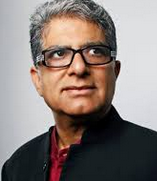 cardiologist at the time and encouraged his son to follow the same path. Chopra, however, had other ideas: he wanted to become a journalist or actor. His love for reading prompted his father to give him the book Arrowsmith by Sinclair Lewis, a text which led him to seek a career in medicine after all (“Deepak Chopra Facts” 2010).
cardiologist at the time and encouraged his son to follow the same path. Chopra, however, had other ideas: he wanted to become a journalist or actor. His love for reading prompted his father to give him the book Arrowsmith by Sinclair Lewis, a text which led him to seek a career in medicine after all (“Deepak Chopra Facts” 2010).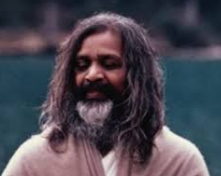

 In 1996, he left Sharp in order to open the Chopra Center for Well Being with neurologist David Simon. The Center states that its goal is to “guide guests in timeless tools and healing principles that they can use to nurture their own health, restore balance, and create greater joy and fulfillment in their lives.” It offers classes, medical consultations, spa treatments, online Vedic counseling and Ayurvedic products to promote balance and well-being (The Chopra Center 2014). In addition to the original Chopra Center, an alternate center for the treatment of addiction has been established. The Chopra Center maintains a website offering information regarding Dr. Chopra’s theories and links to Chopra’s subsidiaries (Well World, Intent, Deepak Central, Deepak Chopra Radio, Deepak Homebase, Daily Challenge, Ahalife, and Curiosity).
In 1996, he left Sharp in order to open the Chopra Center for Well Being with neurologist David Simon. The Center states that its goal is to “guide guests in timeless tools and healing principles that they can use to nurture their own health, restore balance, and create greater joy and fulfillment in their lives.” It offers classes, medical consultations, spa treatments, online Vedic counseling and Ayurvedic products to promote balance and well-being (The Chopra Center 2014). In addition to the original Chopra Center, an alternate center for the treatment of addiction has been established. The Chopra Center maintains a website offering information regarding Dr. Chopra’s theories and links to Chopra’s subsidiaries (Well World, Intent, Deepak Central, Deepak Chopra Radio, Deepak Homebase, Daily Challenge, Ahalife, and Curiosity).
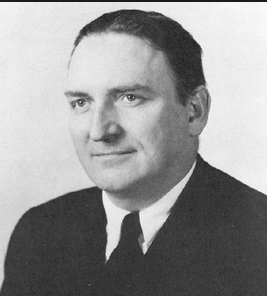 from three generations of Disciples of Christ ministers and, after earning a degree in Biblical Studies from Valparaiso University in Indiana in 1918, became a minister himself in Wisconsin, Illinois and Indiana. Four years later, in 1922, Smith married Elna Sorenson, and they adopted their only child, Gerald L. K. Smith Jr. In 1929, after Smith moved to Shreveport, Louisiana to work as a pastor at Kings Highway Disciples of Christ Church, he met Huey Long, a lawyer and future U.S. senator. Due to Smith’s association with Long, whose populist leanings were controversial, Smith was forced to resign from his post as pastor to avoid being fired by his angry and conservative church directors.
from three generations of Disciples of Christ ministers and, after earning a degree in Biblical Studies from Valparaiso University in Indiana in 1918, became a minister himself in Wisconsin, Illinois and Indiana. Four years later, in 1922, Smith married Elna Sorenson, and they adopted their only child, Gerald L. K. Smith Jr. In 1929, after Smith moved to Shreveport, Louisiana to work as a pastor at Kings Highway Disciples of Christ Church, he met Huey Long, a lawyer and future U.S. senator. Due to Smith’s association with Long, whose populist leanings were controversial, Smith was forced to resign from his post as pastor to avoid being fired by his angry and conservative church directors.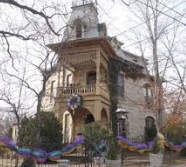 retirement home. Two years after their arrival, Smith began his long-term goal of creating his Sacred Projects and the Great Passion Play religious theme park. The first of these projects was the Christ of the Ozarks Statue, a seven-story statue of Jesus. The statue itself was created by sculptor Emmet Sullivan and, with the help of the Elna Smith Foundation, was completed and dedicated in 1966. The statue was built with more than two million pounds of mortar and steel.
retirement home. Two years after their arrival, Smith began his long-term goal of creating his Sacred Projects and the Great Passion Play religious theme park. The first of these projects was the Christ of the Ozarks Statue, a seven-story statue of Jesus. The statue itself was created by sculptor Emmet Sullivan and, with the help of the Elna Smith Foundation, was completed and dedicated in 1966. The statue was built with more than two million pounds of mortar and steel.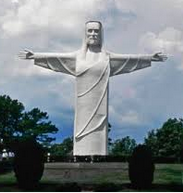 lifelong dream (“Christ of the Ozarks” n.d.). Counting the 1,500 foot-tall mountain on which the statue rests, Christ of the Ozarks (which itself is sixty-seven feet in height) is the third-tallest Jesus in the world. By some accounts, the statue originally had feet beneath its robe, but they were removed to meet height regulations so that a warning beacon would not have to be placed on the top of the head.
lifelong dream (“Christ of the Ozarks” n.d.). Counting the 1,500 foot-tall mountain on which the statue rests, Christ of the Ozarks (which itself is sixty-seven feet in height) is the third-tallest Jesus in the world. By some accounts, the statue originally had feet beneath its robe, but they were removed to meet height regulations so that a warning beacon would not have to be placed on the top of the head.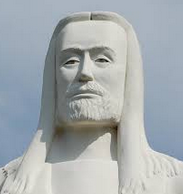 human figure. This has led to ongoing criticism about the shape and features of the statue. Negative comments about the statue include it having no passion behind its eyes, resembling Willie Nelson in a dress, and looking like a milk carton with a tennis ball on top. Locals sometimes refer to the statue as the milk carton with arms. Nonetheless, as one guide at the statue commented, “I don’t really like the statue. The features are harsh and hard. But it’s a memorial to our Savior, and for that it’s fine” (“Christ of the Ozarks n.d.)
human figure. This has led to ongoing criticism about the shape and features of the statue. Negative comments about the statue include it having no passion behind its eyes, resembling Willie Nelson in a dress, and looking like a milk carton with a tennis ball on top. Locals sometimes refer to the statue as the milk carton with arms. Nonetheless, as one guide at the statue commented, “I don’t really like the statue. The features are harsh and hard. But it’s a memorial to our Savior, and for that it’s fine” (“Christ of the Ozarks n.d.)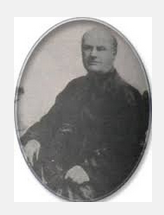 religious monument in Rio de Janeiro to look out over the city. Father Boss proposed that the monument would be constructed in Princess Isabel’s honor (Dunnell n.d.) It was to be a statue of Jesus, called Christ the Redeemer, built on Corcovado, a wooded mountain in the hills of Rio. Princess Isabel signaled her reluctance by not acting on Father Boss’s request. When her father, Emperor Pedro II, returned from the Paraguayan war in 1870, no further mention was made nor action taken on the proposal.
religious monument in Rio de Janeiro to look out over the city. Father Boss proposed that the monument would be constructed in Princess Isabel’s honor (Dunnell n.d.) It was to be a statue of Jesus, called Christ the Redeemer, built on Corcovado, a wooded mountain in the hills of Rio. Princess Isabel signaled her reluctance by not acting on Father Boss’s request. When her father, Emperor Pedro II, returned from the Paraguayan war in 1870, no further mention was made nor action taken on the proposal.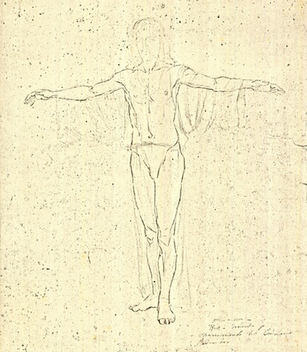 Christ carrying his cross and holding a globe in his hands while he stood over a pedestal meant to symbolize the world. In the end, the existing statue of Christ, with arms outstretched to show universal love and acceptance, was selected. The Archdiocese asked for donations from the many Catholics living in Brazil, and in the single week set aside for fundraising (Semana do Monumento), enough money was raised to begin the project, with money continuing to come in for its completion (Dunnell n.d.).
Christ carrying his cross and holding a globe in his hands while he stood over a pedestal meant to symbolize the world. In the end, the existing statue of Christ, with arms outstretched to show universal love and acceptance, was selected. The Archdiocese asked for donations from the many Catholics living in Brazil, and in the single week set aside for fundraising (Semana do Monumento), enough money was raised to begin the project, with money continuing to come in for its completion (Dunnell n.d.). in the 1920s, Count Celso, described it as a “monument to science, art and religion” (Bowater, Mulvey, and Misra 2014). Padre Omar Raposo, rector of the chapel at the base of the statue, says, “It’s a religious symbol, a cultural symbol and a symbol of Brazil. Christ the Redeemer brings a marvelous vista of welcoming open arms to all those who pass through the city of Rio de Janeiro” (Bowater, Mulvey, and Misra 2014). During Rio’s annual Carnival, a street party dubbed Suvaco do Cristo (Christ’s Armpit) winds its way beneath the statue in tribute to its outstretched arms overhead.
in the 1920s, Count Celso, described it as a “monument to science, art and religion” (Bowater, Mulvey, and Misra 2014). Padre Omar Raposo, rector of the chapel at the base of the statue, says, “It’s a religious symbol, a cultural symbol and a symbol of Brazil. Christ the Redeemer brings a marvelous vista of welcoming open arms to all those who pass through the city of Rio de Janeiro” (Bowater, Mulvey, and Misra 2014). During Rio’s annual Carnival, a street party dubbed Suvaco do Cristo (Christ’s Armpit) winds its way beneath the statue in tribute to its outstretched arms overhead.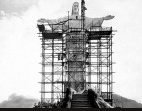 outstretched arms meant the piece had to be extraordinarily strong, so building materials were considered carefully. Designer Costa decided on steel-reinforced concrete, the “material of the future,” he said (Bowater, Mulvey and Misra 2014). However, he considered concrete to be too rough and crude to be the exterior finish. He happened on a fountain on the Champs Elysees covered in a silvery mosaic. “By seeing how the small tiles covered the curved profiles of the fountain, I was soon taken by the idea of using them on the image which I always had in my thoughts,” wrote Costa. “Moving from the concept to the making of it took less than 24 hours. The next morning I went to a ceramic studio where I made the first samples” (Bowater, Mulvey and Misra 2014). He chose soapstone for the tiles because of its durability. From quarries near the city of Ouro Preto, small triangles of pale colored soapstone, 3cm x 3cm x 4cm and 5mm thick, were cut and subsequently glued to squares of linen cloth by women in one of the parishes near the foot of Corcovado. Renovation also presents a challenge since perfectly matching tiles are not available. As a spokesman for Brazil’s National Institute of Historic and Artistic Heritage noted, “The stones of Christ are hard to find” (Bowater, Mulvey and Misra 2014).
outstretched arms meant the piece had to be extraordinarily strong, so building materials were considered carefully. Designer Costa decided on steel-reinforced concrete, the “material of the future,” he said (Bowater, Mulvey and Misra 2014). However, he considered concrete to be too rough and crude to be the exterior finish. He happened on a fountain on the Champs Elysees covered in a silvery mosaic. “By seeing how the small tiles covered the curved profiles of the fountain, I was soon taken by the idea of using them on the image which I always had in my thoughts,” wrote Costa. “Moving from the concept to the making of it took less than 24 hours. The next morning I went to a ceramic studio where I made the first samples” (Bowater, Mulvey and Misra 2014). He chose soapstone for the tiles because of its durability. From quarries near the city of Ouro Preto, small triangles of pale colored soapstone, 3cm x 3cm x 4cm and 5mm thick, were cut and subsequently glued to squares of linen cloth by women in one of the parishes near the foot of Corcovado. Renovation also presents a challenge since perfectly matching tiles are not available. As a spokesman for Brazil’s National Institute of Historic and Artistic Heritage noted, “The stones of Christ are hard to find” (Bowater, Mulvey and Misra 2014).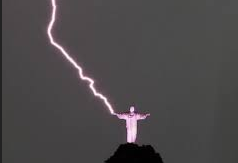 Institute of Space Research estimates that there are two to four direct hits each year, but historically the damage has been minor. Some exceptionally severe lightning storms have occurred in the past few years, however. Bowater, Mulvey and Misra (2014) report that “In the past few years, there have been some cases of storms registering more than 1,000 lightning bolts, which did not occur previously.” These events are causing the Institute’s atmospheric electricity group to revise the grounding system of the lightning rods. The statue has lost a middle fingertip and there has been damage to the back of the statue’s head in recent years. The statue has also been the target of vandalism (Ribeiro 2010).
Institute of Space Research estimates that there are two to four direct hits each year, but historically the damage has been minor. Some exceptionally severe lightning storms have occurred in the past few years, however. Bowater, Mulvey and Misra (2014) report that “In the past few years, there have been some cases of storms registering more than 1,000 lightning bolts, which did not occur previously.” These events are causing the Institute’s atmospheric electricity group to revise the grounding system of the lightning rods. The statue has lost a middle fingertip and there has been damage to the back of the statue’s head in recent years. The statue has also been the target of vandalism (Ribeiro 2010).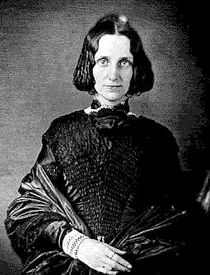 Congregational Church her family was attending when she came of age, but only after informing the pastor that she did not subscribe to the doctrines of either the fall or predestination (Eddy 1892).
Congregational Church her family was attending when she came of age, but only after informing the pastor that she did not subscribe to the doctrines of either the fall or predestination (Eddy 1892).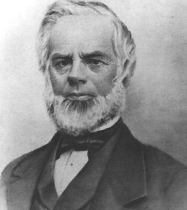 the alternative medicine treatments popular at the time, including hydropathy (water cure) and Sylvester Graham’s nutritional system. In 1862, she heard of healer Phineas Parkhurst Quimby and traveled to his practice in Maine. Quimby had studied mesmerism and developed his own system for healing, sometimes called, Mind Cure. The cure rested on the idea that since illness arose in the mind, freeing the mind of diseased thought would lead to healing.
the alternative medicine treatments popular at the time, including hydropathy (water cure) and Sylvester Graham’s nutritional system. In 1862, she heard of healer Phineas Parkhurst Quimby and traveled to his practice in Maine. Quimby had studied mesmerism and developed his own system for healing, sometimes called, Mind Cure. The cure rested on the idea that since illness arose in the mind, freeing the mind of diseased thought would lead to healing.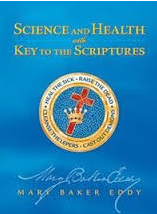 Version of the Bible , constitutes the core of Christian Science theology and practice. Over the years, Eddy produced over four hundred editions of what she called the Christian Science textbook.
Version of the Bible , constitutes the core of Christian Science theology and practice. Over the years, Eddy produced over four hundred editions of what she called the Christian Science textbook. women pastors of the branch churches with this text and the Bible. She continued developing the church organization and produced the first edition of the Manual of the Mother Church in 1895. A comprehensive text, it contains rules determining all functions of the organization from the order of worship in services to the election of the Board of Directors. The material in the 1908 Manual (the last version) cannot be changed without the permission of Mary Baker Eddy.
women pastors of the branch churches with this text and the Bible. She continued developing the church organization and produced the first edition of the Manual of the Mother Church in 1895. A comprehensive text, it contains rules determining all functions of the organization from the order of worship in services to the election of the Board of Directors. The material in the 1908 Manual (the last version) cannot be changed without the permission of Mary Baker Eddy.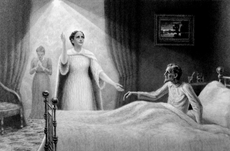 not subject to sickness, sin, or death since these are not part of God’s creation and hence are not real. To realize that the creation is spiritual, not material, is to exist in the reflection of God and to be well. To be sure, people can feel ill, but this is an error of the material sense.
not subject to sickness, sin, or death since these are not part of God’s creation and hence are not real. To realize that the creation is spiritual, not material, is to exist in the reflection of God and to be well. To be sure, people can feel ill, but this is an error of the material sense. trained through a twelve session course, The Primary Class, that was designed by Mary Baker Eddy and is offered by church approved teachers. According to one of the church’s websites, Healing Unlimited, authorized practitioners are considered professionals by the church and charge for their services, which focus on the prayerful resolution of problems that include “the whole spectrum of human fears, griefs, wants, sins, and ills. Practitioners are called upon to give Christian Science treatment not only in cases of physical disease and emotional disturbance, but in family and financial difficulties, business problems, questions of employment, schooling, professional advancement, theological confusion, and so forth” (Healing Unlimited 2012). Practitioners work with individuals seeking Christian Science healing by praying with and for them and guiding them to appropriate passages in Science and Health and the Bible.
trained through a twelve session course, The Primary Class, that was designed by Mary Baker Eddy and is offered by church approved teachers. According to one of the church’s websites, Healing Unlimited, authorized practitioners are considered professionals by the church and charge for their services, which focus on the prayerful resolution of problems that include “the whole spectrum of human fears, griefs, wants, sins, and ills. Practitioners are called upon to give Christian Science treatment not only in cases of physical disease and emotional disturbance, but in family and financial difficulties, business problems, questions of employment, schooling, professional advancement, theological confusion, and so forth” (Healing Unlimited 2012). Practitioners work with individuals seeking Christian Science healing by praying with and for them and guiding them to appropriate passages in Science and Health and the Bible. 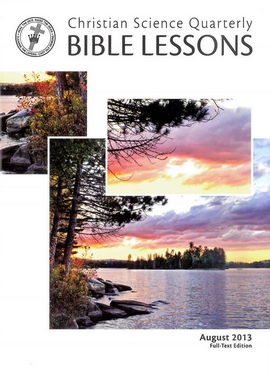 music; other music includes a performance by a paid soloist and hymns from the Christian Science Hymnal. There are no clergy in Christian Science; instead the service is led by a First and Second Reader who are elected for a three year term. The First Reader, always a female, opens the service with a brief statement and reads from Science and Health. The Second reader, a male, reads from the King James Version of the Bible. The passages are prescribed by an anonymous committee in Boston. The Bible Lesson, used in all churches, is read by the First and Second Readers. Through the Christian Science Quarterly, congregants have access to the weekly Bible and Science and Health passages along with the Bible Lesson in advance and can study them prior to attending the Sunday service.
music; other music includes a performance by a paid soloist and hymns from the Christian Science Hymnal. There are no clergy in Christian Science; instead the service is led by a First and Second Reader who are elected for a three year term. The First Reader, always a female, opens the service with a brief statement and reads from Science and Health. The Second reader, a male, reads from the King James Version of the Bible. The passages are prescribed by an anonymous committee in Boston. The Bible Lesson, used in all churches, is read by the First and Second Readers. Through the Christian Science Quarterly, congregants have access to the weekly Bible and Science and Health passages along with the Bible Lesson in advance and can study them prior to attending the Sunday service.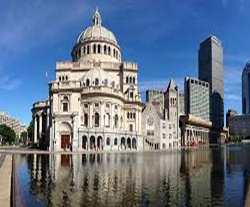 which states that “ The Church officers shall consist of the Pastor Emeritus, a Board of Directors, a President, a Clerk, a Treasurer, and two Readers” (Eddy 1910). Mary Baker Eddy is the Pastor Emeritus; she abolished the role of pastor completely in 1894 so there are no Christian Science clergy. Baker Eddy included several committees in her institutionalization of the church. These include the Board of Education and the Board of Lectureship. The Committee on Publication was tasked by Eddy with directly addressing any misinformation appearing about Christian Science. Branch churches are administered by their local members who must abide by the Manual. No emendations to the Manual (or the by-laws) can occur without the written permission of Mary Baker Eddy.
which states that “ The Church officers shall consist of the Pastor Emeritus, a Board of Directors, a President, a Clerk, a Treasurer, and two Readers” (Eddy 1910). Mary Baker Eddy is the Pastor Emeritus; she abolished the role of pastor completely in 1894 so there are no Christian Science clergy. Baker Eddy included several committees in her institutionalization of the church. These include the Board of Education and the Board of Lectureship. The Committee on Publication was tasked by Eddy with directly addressing any misinformation appearing about Christian Science. Branch churches are administered by their local members who must abide by the Manual. No emendations to the Manual (or the by-laws) can occur without the written permission of Mary Baker Eddy. Rooms where material approved by the Board of Directors would be available to the public to read free of charge. Staffed by Christian Scientist volunteers, the Reading Rooms also distribute copies of Christian Science materials.
Rooms where material approved by the Board of Directors would be available to the public to read free of charge. Staffed by Christian Scientist volunteers, the Reading Rooms also distribute copies of Christian Science materials.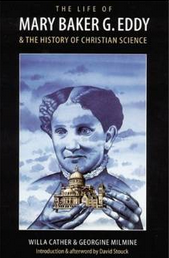 featured poorly researched articles about Eddy. A scathing fourteen-installment series by Willa Cather and Georgine Milmine appeared in McClure’s Magazine between 1906 and 1908. In response to what she believed were unfair press reports, Eddy founded the Christian Science Monitor in 1908 in order to print the news fairly and thoroughly. Ironically, the Monitor has gone on to win several Pulitzer Prizes.
featured poorly researched articles about Eddy. A scathing fourteen-installment series by Willa Cather and Georgine Milmine appeared in McClure’s Magazine between 1906 and 1908. In response to what she believed were unfair press reports, Eddy founded the Christian Science Monitor in 1908 in order to print the news fairly and thoroughly. Ironically, the Monitor has gone on to win several Pulitzer Prizes.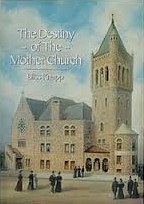 of Bliss Knapp emerged. Knapp had been a devoted follower of Eddy and had written a book in 1947, The Destiny of the Mother Church , which proclaimed Eddy to be the Second Coming of Christ (Knapp 1991). In light of the large amount of funding this would bring to the recently diminished church coffers, the Board of Directors agreed to publish the book. Many Christian Scientists took issue with this decision and several protesting groups coalesced. This was not the first time the issue of who exactly Eddy was had presented itself, and Eddy herself had prohibited what she called “deification of personality” when she felt some followers where aligning her too closely with Jesus (Eddy 1894). The protestors saw Eddy’s prohibition of “deification” as clearly precluding publication of the Knapp text. The Board excommunicated several vocal protesters, a move that was rare but not unprecedented. Several key staff resigned, and the Board found themselves in a very contentious Annual Meeting in 1993. Ultimately, the Board left the decision of whether or not to carry and/or sell the Knapp book up to the local Christian Science Reading Rooms, and published a wide range of other biographies of Eddy. By the time the Mary Baker Eddy Library and archives opened in 2002, the protests were subsiding.
of Bliss Knapp emerged. Knapp had been a devoted follower of Eddy and had written a book in 1947, The Destiny of the Mother Church , which proclaimed Eddy to be the Second Coming of Christ (Knapp 1991). In light of the large amount of funding this would bring to the recently diminished church coffers, the Board of Directors agreed to publish the book. Many Christian Scientists took issue with this decision and several protesting groups coalesced. This was not the first time the issue of who exactly Eddy was had presented itself, and Eddy herself had prohibited what she called “deification of personality” when she felt some followers where aligning her too closely with Jesus (Eddy 1894). The protestors saw Eddy’s prohibition of “deification” as clearly precluding publication of the Knapp text. The Board excommunicated several vocal protesters, a move that was rare but not unprecedented. Several key staff resigned, and the Board found themselves in a very contentious Annual Meeting in 1993. Ultimately, the Board left the decision of whether or not to carry and/or sell the Knapp book up to the local Christian Science Reading Rooms, and published a wide range of other biographies of Eddy. By the time the Mary Baker Eddy Library and archives opened in 2002, the protests were subsiding.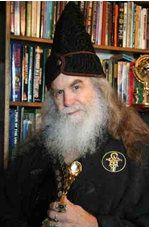 Missouri. As a child, Zell read the Greek myths and fairy tales, which instilled in him an affinity for myth and magic. He also had paranormal experiences, such as experiencing visions from his grandfather’s life. Zell enrolled in Westminster College in Fulton, Missouri in 1961 and was married for the first time in 1963. Timothy and Martha (McCance) Zell had a son that same year. Zell went on to receive his undergraduate degree in psychology from Westminster in 1965, enrolled as a graduate student at Washington University in St. Louis for a short time, and then enrolled in Life Science College in Rolling Meadows, Illinois. Two years later was awarded a Doctor of Divinity degree.
Missouri. As a child, Zell read the Greek myths and fairy tales, which instilled in him an affinity for myth and magic. He also had paranormal experiences, such as experiencing visions from his grandfather’s life. Zell enrolled in Westminster College in Fulton, Missouri in 1961 and was married for the first time in 1963. Timothy and Martha (McCance) Zell had a son that same year. Zell went on to receive his undergraduate degree in psychology from Westminster in 1965, enrolled as a graduate student at Washington University in St. Louis for a short time, and then enrolled in Life Science College in Rolling Meadows, Illinois. Two years later was awarded a Doctor of Divinity degree.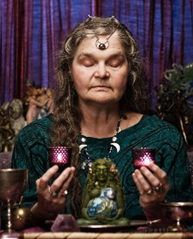 organizations. He separated from and divorced his first wife, and had brief relationships with other women before marrying Diana Moore (Morning Glory Ravenheart) at a public Pagan handfasting. Moore, who was born in 1948 in Long Beach, had attended Methodist and Pentecostal churches during her childhood, but broke with Christianity as a teen. She began practicing witchcraft at seventeen and changed her name to Morning Glory at twenty. She was married for a short time before meeting and soon marrying Zell in 1973. The couple sustained a lifelong, but sexually open (polyamorous), marital relationship. Among these relationships were the formation of a triad with Diane Darling, who became editor of Green Egg in 1988, and a triad with Wolf Dean Stiles, which led to the adoption of Ravenheart as a family name for all three partners.
organizations. He separated from and divorced his first wife, and had brief relationships with other women before marrying Diana Moore (Morning Glory Ravenheart) at a public Pagan handfasting. Moore, who was born in 1948 in Long Beach, had attended Methodist and Pentecostal churches during her childhood, but broke with Christianity as a teen. She began practicing witchcraft at seventeen and changed her name to Morning Glory at twenty. She was married for a short time before meeting and soon marrying Zell in 1973. The couple sustained a lifelong, but sexually open (polyamorous), marital relationship. Among these relationships were the formation of a triad with Diane Darling, who became editor of Green Egg in 1988, and a triad with Wolf Dean Stiles, which led to the adoption of Ravenheart as a family name for all three partners. Ecosophical Research Association, Universal Federation of Pagans, Grey School of Wizardry). The Ecosophical Research Association offered a source of income for a time as the Zells produced unicorns by breeding and surgically altering white goats, four of which were sold to Ringling Bros. Barnum & Bailey Circus in 1984. The following year the organization, which aims to “explore the territory of the archetype, the basis of legends and the boundaries between the sacred and the secular” and specializes in crypozoology, undertook a search for mermaids in the South Seas (Adler 1975:317). The Grey School of Wizardry, founded in 2004, is a magickal education system that is organized online.
Ecosophical Research Association, Universal Federation of Pagans, Grey School of Wizardry). The Ecosophical Research Association offered a source of income for a time as the Zells produced unicorns by breeding and surgically altering white goats, four of which were sold to Ringling Bros. Barnum & Bailey Circus in 1984. The following year the organization, which aims to “explore the territory of the archetype, the basis of legends and the boundaries between the sacred and the secular” and specializes in crypozoology, undertook a search for mermaids in the South Seas (Adler 1975:317). The Grey School of Wizardry, founded in 2004, is a magickal education system that is organized online.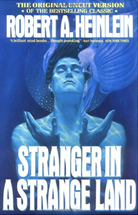
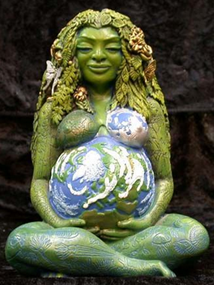 of the Goddess,” which was later developed into “The Gaea Thesis.” It posits that “the entire Biosphere of the Earth comprises a single living organism” and is composed of all living life-forms (Cusack 2010:65; Adler 1975:298). Zell (2010) traces the evolution of the Biosphere of the Earth back to a single living cell:
of the Goddess,” which was later developed into “The Gaea Thesis.” It posits that “the entire Biosphere of the Earth comprises a single living organism” and is composed of all living life-forms (Cusack 2010:65; Adler 1975:298). Zell (2010) traces the evolution of the Biosphere of the Earth back to a single living cell: credited with inventing the concept of polyamory in “A Bouquet of Lovers.” As she describes polyamorous relationships, “The goal of a responsible Open Relationship is to cultivate ongoing, long-term, complex relationships which are rooted in deep mutual friendships.” Polyamory is thus one of the expressions of human interconnectedness and protests against divisive exclusivity. Open relationships are sustained by honesty, transparency, mutual agreement. A further provision is that unprotected sexual relationships may by practiced only within the group, which is the “Condom Compact” (Morning Glory Zell n.d.).
credited with inventing the concept of polyamory in “A Bouquet of Lovers.” As she describes polyamorous relationships, “The goal of a responsible Open Relationship is to cultivate ongoing, long-term, complex relationships which are rooted in deep mutual friendships.” Polyamory is thus one of the expressions of human interconnectedness and protests against divisive exclusivity. Open relationships are sustained by honesty, transparency, mutual agreement. A further provision is that unprotected sexual relationships may by practiced only within the group, which is the “Condom Compact” (Morning Glory Zell n.d.).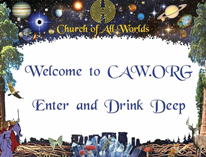 heritage, decries the absence of meaningful ritual in American culture:
heritage, decries the absence of meaningful ritual in American culture: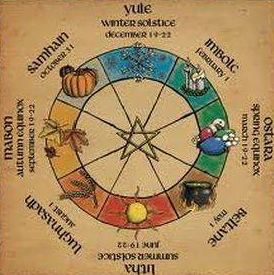 commonly referred to as the “Wheel of the Year.” These include days of the solstices and equinoxes and the cross quarter days. Many members ritually observe the Full and/or New Moon monthly. Waterkin typically believe that the ritual observation of the “Wheel of the Year” and cycles of the Moon can bring about a communion with Divinity through attunement of one’s life with the waxing and waning of Nature. The changing seasons, the waxing and waning of darkness and light, are understood as an expression of the life cycle of Divinity that includes birth, love, death and rebirth. CAW also holds initiation, handfastings, vision quests, retreats and workshops of various kinds.
commonly referred to as the “Wheel of the Year.” These include days of the solstices and equinoxes and the cross quarter days. Many members ritually observe the Full and/or New Moon monthly. Waterkin typically believe that the ritual observation of the “Wheel of the Year” and cycles of the Moon can bring about a communion with Divinity through attunement of one’s life with the waxing and waning of Nature. The changing seasons, the waxing and waning of darkness and light, are understood as an expression of the life cycle of Divinity that includes birth, love, death and rebirth. CAW also holds initiation, handfastings, vision quests, retreats and workshops of various kinds.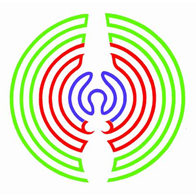 each of which contains three concentric Circles. The Rings are described as “ an initiatory path leading ever inward , towards the consciousness of the Goddess/God Within, with a threefold purpose of a) self actualization, b) connection / tribal involvement and c) service” (Maureen n.d.; “The Church of All Worlds n.d.).
each of which contains three concentric Circles. The Rings are described as “ an initiatory path leading ever inward , towards the consciousness of the Goddess/God Within, with a threefold purpose of a) self actualization, b) connection / tribal involvement and c) service” (Maureen n.d.; “The Church of All Worlds n.d.).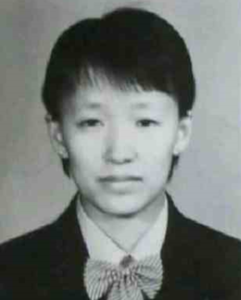
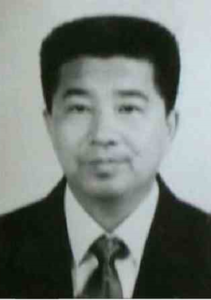
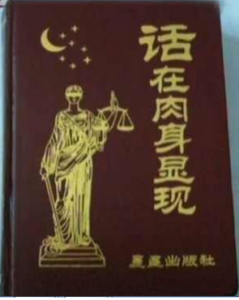
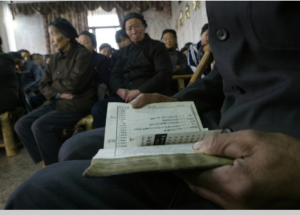
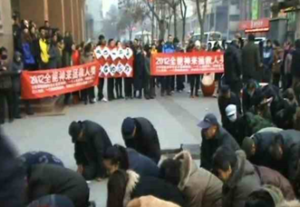

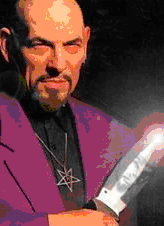
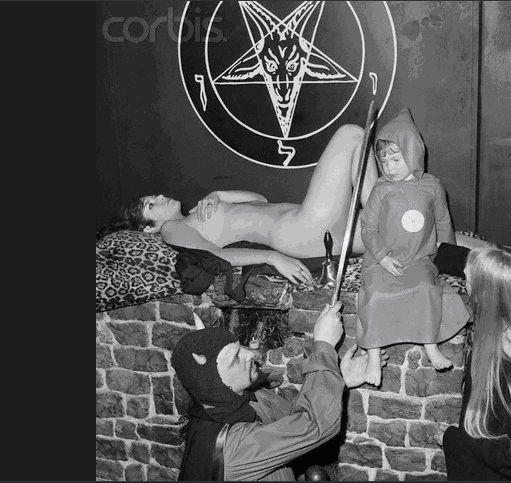 Although the couple never married, they were subsequently given joint title to LaVey’s parents’ home. In 1964, Hegarty and LaVey gave birth to a daughter, [Image at right] Zeena Galatea LaVey. The couple divorced in 1980. LaVey subsequently developed a relationship with Blanche Barton, who became his final companion and bore him his only son, Satan Xerxes Carnacki LaVey in 1993.
Although the couple never married, they were subsequently given joint title to LaVey’s parents’ home. In 1964, Hegarty and LaVey gave birth to a daughter, [Image at right] Zeena Galatea LaVey. The couple divorced in 1980. LaVey subsequently developed a relationship with Blanche Barton, who became his final companion and bore him his only son, Satan Xerxes Carnacki LaVey in 1993.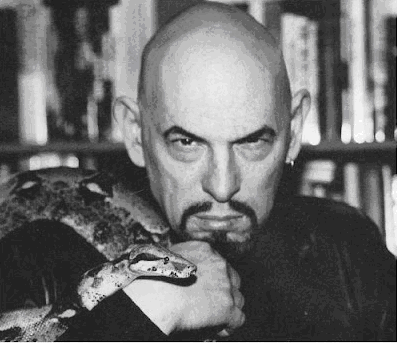 satanic ritual with a nude member of his congregation, Lois Morgenstern, serving as the altar; drove a coroner’s van as a car; painted the walls of his home black; and kept a variety of exotic pets (a tarantula, python, and pet Nubian lion named Tolgare). In 1968, he released his first record album, “The Satanic Mass.” A string of celebrities, including Jayne Mansfield, Sammy Davis Jr., King Diamond and Marilyn Manson also were linked to the Church of Satan during this period. LaVey gained further public visibility by appearing regularly in national printed media (Look Magazine, Newsweeek Magazine, Time Magazine) and on television talk shows (The Johnny Carson Show, The Phil Donahue Show).
satanic ritual with a nude member of his congregation, Lois Morgenstern, serving as the altar; drove a coroner’s van as a car; painted the walls of his home black; and kept a variety of exotic pets (a tarantula, python, and pet Nubian lion named Tolgare). In 1968, he released his first record album, “The Satanic Mass.” A string of celebrities, including Jayne Mansfield, Sammy Davis Jr., King Diamond and Marilyn Manson also were linked to the Church of Satan during this period. LaVey gained further public visibility by appearing regularly in national printed media (Look Magazine, Newsweeek Magazine, Time Magazine) and on television talk shows (The Johnny Carson Show, The Phil Donahue Show).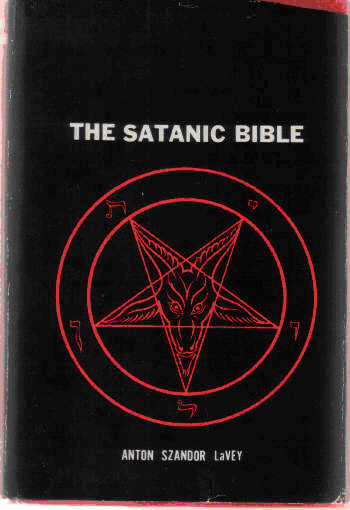 found in Anton LaVey’s Satanic Bible , published in 1969. The Satanic Bible instantly became a best seller and has remained in print continuously since 1969. Sales figures aside, the book remains a foundational source among many Satanists. However, LaVey published several other books that further developed his philosophy. The Compleat Witch was published in 1971 (and released again in 1989 as The Satanic Witch). This book provides instruction of using lesser magic to manipulate others in order to achieve one’s own goals. The Satanic Rituals (1972) describes a variety of satanic rituals he discovered in cultures around the world and was intended to supplement the Satanic Bible. Two later volumes were The Devil’s Notebook (1992) and Satan Speaks (1998). LaVey also disseminated his ideas through the church’s periodical, The Cloven Hoof, which later became The Black Flame.
found in Anton LaVey’s Satanic Bible , published in 1969. The Satanic Bible instantly became a best seller and has remained in print continuously since 1969. Sales figures aside, the book remains a foundational source among many Satanists. However, LaVey published several other books that further developed his philosophy. The Compleat Witch was published in 1971 (and released again in 1989 as The Satanic Witch). This book provides instruction of using lesser magic to manipulate others in order to achieve one’s own goals. The Satanic Rituals (1972) describes a variety of satanic rituals he discovered in cultures around the world and was intended to supplement the Satanic Bible. Two later volumes were The Devil’s Notebook (1992) and Satan Speaks (1998). LaVey also disseminated his ideas through the church’s periodical, The Cloven Hoof, which later became The Black Flame.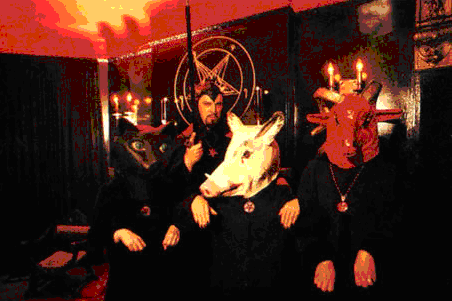 other institutionalized religion. [Image at right] Specifically, it was organized as a parody of the Roman Catholic Mass, but the symbolic significance was broader. According to LaVey, the Black Mass functioned as a psychodrama through which cathartic blasphemies could be expressed. The anti-Christian symbolism was evident in the incorporation hooded robes; an inverted crucifix; a nude woman used as an altar; and baptisms, weddings, and funerals, with satanic content. As the church became established, these rituals were discontinued, although they continued to be linked to the church in the public mind. The pentagram and Sigil of Baphomet (a point-down pentagram inside a circle, with a goat’s head inside the pentagram) continue to be important symbols of Satanism.
other institutionalized religion. [Image at right] Specifically, it was organized as a parody of the Roman Catholic Mass, but the symbolic significance was broader. According to LaVey, the Black Mass functioned as a psychodrama through which cathartic blasphemies could be expressed. The anti-Christian symbolism was evident in the incorporation hooded robes; an inverted crucifix; a nude woman used as an altar; and baptisms, weddings, and funerals, with satanic content. As the church became established, these rituals were discontinued, although they continued to be linked to the church in the public mind. The pentagram and Sigil of Baphomet (a point-down pentagram inside a circle, with a goat’s head inside the pentagram) continue to be important symbols of Satanism.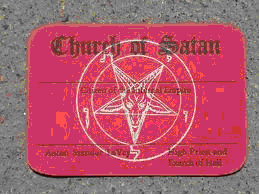 Members are those who have registered and paid the stipulated fee; [Image at right] there are not other requirements for this basic membership. There are five degrees of Active Membership, which available only by invitation. The top three degrees constitute the priesthood and are addressed as either Reverend or “Magister/Magistra” and “Magus/Maga.” The priesthood represents the Church of Satan as spokespersons and constitutes the governing body, the Council of Nine. The Church of Satan has claimed hundreds of thousands of members. While the Satanic Bible has probably sold 1,000,000 copies and has remained in print continuously since its publication, the popularity of the philosophy has not been matched church membership. Even the most generous estimates have been no more than a few thousand at the height of the church’s visibility, and more realistic estimates are several hundred at its peak.
Members are those who have registered and paid the stipulated fee; [Image at right] there are not other requirements for this basic membership. There are five degrees of Active Membership, which available only by invitation. The top three degrees constitute the priesthood and are addressed as either Reverend or “Magister/Magistra” and “Magus/Maga.” The priesthood represents the Church of Satan as spokespersons and constitutes the governing body, the Council of Nine. The Church of Satan has claimed hundreds of thousands of members. While the Satanic Bible has probably sold 1,000,000 copies and has remained in print continuously since its publication, the popularity of the philosophy has not been matched church membership. Even the most generous estimates have been no more than a few thousand at the height of the church’s visibility, and more realistic estimates are several hundred at its peak. Ron (L. Ron) Hubbard, [Image at right] who was born on March 13, 1911 in Tilden, Nebraska, the son of a U.S. naval officer. Beyond the date and place of his birth, however, there is little agreement about most other details of Hubbard’s biography, as the narratives provided by the Church of Scientology and those of its many critics are greatly at odds (Urban 2011:30-33; Urban forthcoming; Christensen 2005).
Ron (L. Ron) Hubbard, [Image at right] who was born on March 13, 1911 in Tilden, Nebraska, the son of a U.S. naval officer. Beyond the date and place of his birth, however, there is little agreement about most other details of Hubbard’s biography, as the narratives provided by the Church of Scientology and those of its many critics are greatly at odds (Urban 2011:30-33; Urban forthcoming; Christensen 2005). as the path to transcend the state of Homo sapiens and become a “Homo superior” or superman (1951). Published in book form later in 1950, [Image at right] Dianetics became surprisingly successful and went to the top of the New York Times bestseller list for twenty-eight weeks. The “Dianetics craze,” as journalists called it, spread like wildfire across the U.S., and many small, grassroots Dianetics clubs sprouted up throughout the country (Gumpert 1950).
as the path to transcend the state of Homo sapiens and become a “Homo superior” or superman (1951). Published in book form later in 1950, [Image at right] Dianetics became surprisingly successful and went to the top of the New York Times bestseller list for twenty-eight weeks. The “Dianetics craze,” as journalists called it, spread like wildfire across the U.S., and many small, grassroots Dianetics clubs sprouted up throughout the country (Gumpert 1950). with Mathison in 1954, Hubbard devised his own modification of Mathison’s E-meter, which has undergone various upgrades and is still used to this day. The E-meter [Image at right] works somewhat like a lie-detector, operating as a skin galvanometer that measures fluctuations in the passage of a trickle of electricity through the body. The primary component of the meter is an instrument called the Wheatstone Bridge, which measures changes in electrical resistance. The individual undergoing auditing holds two cylinders that are connected by wires to the meter, while the auditor asks a series of questions in order to identify where specific engrams lie. Once the engram has been identified and cleared from the reactive mind, the needle of the meter is supposed to “float,” which indicates that the individual no longer reacts to that painful memory (Whitehead 1987:142-43).
with Mathison in 1954, Hubbard devised his own modification of Mathison’s E-meter, which has undergone various upgrades and is still used to this day. The E-meter [Image at right] works somewhat like a lie-detector, operating as a skin galvanometer that measures fluctuations in the passage of a trickle of electricity through the body. The primary component of the meter is an instrument called the Wheatstone Bridge, which measures changes in electrical resistance. The individual undergoing auditing holds two cylinders that are connected by wires to the meter, while the auditor asks a series of questions in order to identify where specific engrams lie. Once the engram has been identified and cleared from the reactive mind, the needle of the meter is supposed to “float,” which indicates that the individual no longer reacts to that painful memory (Whitehead 1987:142-43). magazine article, “the Thriving Cult of Greed and Power.” [Image at right] According to Behar’s account, “at least ten attorneys and six private detectives were unleashed by Scientology and its followers in an effort to threaten, harass and discredit me…A copy of my personal credit report – with detailed information about my banks accounts, home mortgage…– had been illegally retrieved” (1991:57). A wide array of other journalists, academics and even ordinary college students have reported similar experiences with the church and its lawyers (Urban 2011:11-13, 109-12).
magazine article, “the Thriving Cult of Greed and Power.” [Image at right] According to Behar’s account, “at least ten attorneys and six private detectives were unleashed by Scientology and its followers in an effort to threaten, harass and discredit me…A copy of my personal credit report – with detailed information about my banks accounts, home mortgage…– had been illegally retrieved” (1991:57). A wide array of other journalists, academics and even ordinary college students have reported similar experiences with the church and its lawyers (Urban 2011:11-13, 109-12). and anarchic network of Internet users that calls itself Anonymous. The Anonymous collective first began to target Scientology in early 2008, [Image at right] following the leak of a confidential video featuring Tom Cruise. The video, in which Cruise appears even more intense than usual, appeared on YouTube on January 15, 2008 and was viewed millions of times, but it was quickly removed from the site after threats of litigation by the church. Scientology’s threats against YouTube became a powerful catalyst for the Anonymous collective, which saw these actions as dangerous attacks on free speech and the open flow of information online. On January 21, 2008, Anonymous released a video of its own entitled Message to Scientology, which also spread virally online. The message features an electronically masked voice delivering a merciless critique and a chilling promise to “destroy” the church. Not long after the message was released, Anonymous members began to confront the church in both cyberspace and physical space, launching cyber attacks on Scientology websites and also staging large protests outside Scientology centers around the world (Seabrook 2008; Landers 2008; Urban 2011:191-96). Often wearing Guy Fawkes masks from the movie V for Vendetta, Anonymous protesters typically carry signs such as “$cientology Kills” and “Religion is Free: Scientology is Neither” and have been active worldwide, from Clearwater to Copenhagen to Columbus, OH. The church, in turn, has denounced Anonymous in the strongest possible terms as a “group of cyberterrorists” who “perpetrate hate crimes” against a religious organization (Urban 2011:193).
and anarchic network of Internet users that calls itself Anonymous. The Anonymous collective first began to target Scientology in early 2008, [Image at right] following the leak of a confidential video featuring Tom Cruise. The video, in which Cruise appears even more intense than usual, appeared on YouTube on January 15, 2008 and was viewed millions of times, but it was quickly removed from the site after threats of litigation by the church. Scientology’s threats against YouTube became a powerful catalyst for the Anonymous collective, which saw these actions as dangerous attacks on free speech and the open flow of information online. On January 21, 2008, Anonymous released a video of its own entitled Message to Scientology, which also spread virally online. The message features an electronically masked voice delivering a merciless critique and a chilling promise to “destroy” the church. Not long after the message was released, Anonymous members began to confront the church in both cyberspace and physical space, launching cyber attacks on Scientology websites and also staging large protests outside Scientology centers around the world (Seabrook 2008; Landers 2008; Urban 2011:191-96). Often wearing Guy Fawkes masks from the movie V for Vendetta, Anonymous protesters typically carry signs such as “$cientology Kills” and “Religion is Free: Scientology is Neither” and have been active worldwide, from Clearwater to Copenhagen to Columbus, OH. The church, in turn, has denounced Anonymous in the strongest possible terms as a “group of cyberterrorists” who “perpetrate hate crimes” against a religious organization (Urban 2011:193). Physics. By his own account, he travelled to Nevada, Arizona, and later to the Philippines where he lived for three years (Church of the Flying Spaghetti Monster 2016a).
Physics. By his own account, he travelled to Nevada, Arizona, and later to the Philippines where he lived for three years (Church of the Flying Spaghetti Monster 2016a).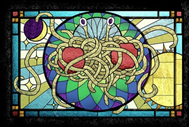 letter was written as a parody of the ways that some Christians co-opt science for their own religious purposes. Its tone is ironic, as its claims are by no means acceptable by scientific standards (for example, that global warming can be directly linked to “the shrinking numbers of pirates since the 1800s”), yet they are put forth earnestly and confidently in mimicry of the manner in which Henderson believes some Christians try to argue for the existence of an “intelligent designer” (Henderson 2005). By copying, and then exaggerating, the style of arguments employed by Creationists, Henderson satirised creationism, highlighting what he regards as the absurdity of its claims, and criticised the school board’s acceptance of intelligent design as science. His ridicule and true position can be sensed in his choice of language for his request that each theory be given equal time in science classes: “One third time for Intelligent Design, one third time for Flying Spaghetti Monsterism (Pastafarianism), and one third time for logical conjecture based on overwhelming observable evidence” (Henderson 2005). By making this comparison, Henderson drew attention to the flaws in intelligent design theory and ultimately suggested that to teach intelligent design as science is as absurd as a flying spaghetti monster creating the universe.
letter was written as a parody of the ways that some Christians co-opt science for their own religious purposes. Its tone is ironic, as its claims are by no means acceptable by scientific standards (for example, that global warming can be directly linked to “the shrinking numbers of pirates since the 1800s”), yet they are put forth earnestly and confidently in mimicry of the manner in which Henderson believes some Christians try to argue for the existence of an “intelligent designer” (Henderson 2005). By copying, and then exaggerating, the style of arguments employed by Creationists, Henderson satirised creationism, highlighting what he regards as the absurdity of its claims, and criticised the school board’s acceptance of intelligent design as science. His ridicule and true position can be sensed in his choice of language for his request that each theory be given equal time in science classes: “One third time for Intelligent Design, one third time for Flying Spaghetti Monsterism (Pastafarianism), and one third time for logical conjecture based on overwhelming observable evidence” (Henderson 2005). By making this comparison, Henderson drew attention to the flaws in intelligent design theory and ultimately suggested that to teach intelligent design as science is as absurd as a flying spaghetti monster creating the universe.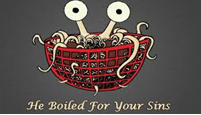 reappropriates many of Christianity’s myths, beliefs and practices and reinterprets them through the lens of FSM, often comically replacing familiar religious ideas with references to pasta; for example, “He boiled for your sins,” or The Old and New “Pastaments.” Pastafarianism is monotheistic in that there is one supreme deity known as the FSM. The FSM is the creator of the universe. He is made of spaghetti, with meatballs embedded in his body and his eyes mounted on breadsticks. He is also an interventionist god, involving himself intimately with humanity by “touching with his noodly appendage.” Though he is invisible, he uses his noodly appendages to control human history, in particular to confuse scientists by making them think the world is older than it really is. This is the reason that there appears to be evidence for evolution and other scientific conclusions, as Henderson explains:
reappropriates many of Christianity’s myths, beliefs and practices and reinterprets them through the lens of FSM, often comically replacing familiar religious ideas with references to pasta; for example, “He boiled for your sins,” or The Old and New “Pastaments.” Pastafarianism is monotheistic in that there is one supreme deity known as the FSM. The FSM is the creator of the universe. He is made of spaghetti, with meatballs embedded in his body and his eyes mounted on breadsticks. He is also an interventionist god, involving himself intimately with humanity by “touching with his noodly appendage.” Though he is invisible, he uses his noodly appendages to control human history, in particular to confuse scientists by making them think the world is older than it really is. This is the reason that there appears to be evidence for evolution and other scientific conclusions, as Henderson explains: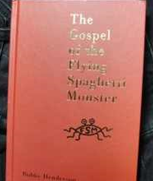 Pastafarians have called “the Big Boil” (Church of the Flying Spaghetti Monster 2016). Parallels to the Biblical creation story abound, although the earth was created in four days, because the FSM rested on the fifth, sixth and seventh day. According to The Gospel of the Flying Spaghetti Monster, on the first day the FSM created light and darkness, and on the second he created the firmament, including a “volcano to spew forth beer.” On the third day, the FSM made vegetation, saying “Let the Earth bring forth grass, semolina, rice and whatever else can be turned into food that resembles my Noodly Appendages” (Henderson 2006:70-71). In addition, because he was hung over from the beer volcano, he had forgotten that he had already created land. So he made more land, but, realising he now had “both land and firmament,” he lifted Day Two’s firmament upwards and named it Heaven, making sure to take the beer volcano with it. On the third day, he created the sun, moon and stars. On the fifth and final day, he created the animals, and, after a heavy drinking session from the beer volcano, had created a stripper factory in Heaven and a midget on Earth. After this he took “an extended break from the whole creation gig,” and declared Fridays to be a holiday.
Pastafarians have called “the Big Boil” (Church of the Flying Spaghetti Monster 2016). Parallels to the Biblical creation story abound, although the earth was created in four days, because the FSM rested on the fifth, sixth and seventh day. According to The Gospel of the Flying Spaghetti Monster, on the first day the FSM created light and darkness, and on the second he created the firmament, including a “volcano to spew forth beer.” On the third day, the FSM made vegetation, saying “Let the Earth bring forth grass, semolina, rice and whatever else can be turned into food that resembles my Noodly Appendages” (Henderson 2006:70-71). In addition, because he was hung over from the beer volcano, he had forgotten that he had already created land. So he made more land, but, realising he now had “both land and firmament,” he lifted Day Two’s firmament upwards and named it Heaven, making sure to take the beer volcano with it. On the third day, he created the sun, moon and stars. On the fifth and final day, he created the animals, and, after a heavy drinking session from the beer volcano, had created a stripper factory in Heaven and a midget on Earth. After this he took “an extended break from the whole creation gig,” and declared Fridays to be a holiday.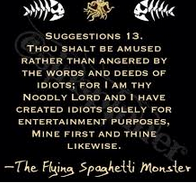 the lack of dogmatism and rigidity in the Church and its understanding of the FSM’s wishes. His wishes are decidedly more flexible, nuanced and comic preferences, rather than absolutist commandments, and show that the FSM criticises the severity of fundamentalist world views. There are only eight because Mosey dropped two of the tablets, which Henderson says “partly accounts for Pastafarians’ flimsy moral standards” (Henderson 2006:77). However, in fact the FSM moral code is fairly strong in its ethics. For example the FSM would “Really Rather You Didn’t Act Like a Sanctimonious, Holier-Than-Thou Ass When Describing My Noodly Goodness…,” and he would “Really Rather You Didn’t Use My Existence As A Means To Oppress, Subjugate, Punish, Eviscerate, And/Or, You Know, Be Mean To Others.” The other requests from the FSM are a blend of moral standards and jokes about vanity, hunger, “lowering the cost of cable,” and sex (Henderson 2006:78).
the lack of dogmatism and rigidity in the Church and its understanding of the FSM’s wishes. His wishes are decidedly more flexible, nuanced and comic preferences, rather than absolutist commandments, and show that the FSM criticises the severity of fundamentalist world views. There are only eight because Mosey dropped two of the tablets, which Henderson says “partly accounts for Pastafarians’ flimsy moral standards” (Henderson 2006:77). However, in fact the FSM moral code is fairly strong in its ethics. For example the FSM would “Really Rather You Didn’t Act Like a Sanctimonious, Holier-Than-Thou Ass When Describing My Noodly Goodness…,” and he would “Really Rather You Didn’t Use My Existence As A Means To Oppress, Subjugate, Punish, Eviscerate, And/Or, You Know, Be Mean To Others.” The other requests from the FSM are a blend of moral standards and jokes about vanity, hunger, “lowering the cost of cable,” and sex (Henderson 2006:78).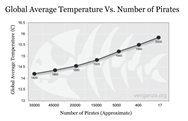 explains to the Board, “You may be interested to know that global warming, earthquakes, hurricanes, and other natural disasters are a direct effect of the shrinking numbers of Pirates since the 1800s” (Henderson 2005). Henderson also included a graph to illustrate his point, that “there is a statistically significant inverse relationship between pirates and global temperature.” His main point is also that evidence can be fabricated for any argument and passed off as science, something that Henderson considers a tactic used by intelligent design advocates.
explains to the Board, “You may be interested to know that global warming, earthquakes, hurricanes, and other natural disasters are a direct effect of the shrinking numbers of Pirates since the 1800s” (Henderson 2005). Henderson also included a graph to illustrate his point, that “there is a statistically significant inverse relationship between pirates and global temperature.” His main point is also that evidence can be fabricated for any argument and passed off as science, something that Henderson considers a tactic used by intelligent design advocates.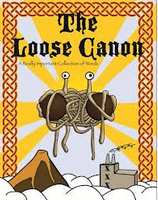 most familiar is the practice of ending all prayers to the FSM with “Ramen,” a combination of the traditional “Amen” and the Japanese noodle. The strongest playful element in Pastafarianism is the act of changing existing religious beliefs and practices into something relating to pasta. In The Loose Cannon (2010), there are chapters titled “The Torahtellini,” “The Book of ProvHerbs,” and the “Acts of the Apastals.” The Loose Cannon also provides a Pastafarian prayer book, containing numerous prayers written by members of the online Pastafarian community. Some are parodies of existing prayers, such as “Hail Marinara” (Hail Mary) (2010:183), “The Spaghettiudes” (the Beatitudes) (2010:194), and multiple versions of the Lord’s Prayer, including:
most familiar is the practice of ending all prayers to the FSM with “Ramen,” a combination of the traditional “Amen” and the Japanese noodle. The strongest playful element in Pastafarianism is the act of changing existing religious beliefs and practices into something relating to pasta. In The Loose Cannon (2010), there are chapters titled “The Torahtellini,” “The Book of ProvHerbs,” and the “Acts of the Apastals.” The Loose Cannon also provides a Pastafarian prayer book, containing numerous prayers written by members of the online Pastafarian community. Some are parodies of existing prayers, such as “Hail Marinara” (Hail Mary) (2010:183), “The Spaghettiudes” (the Beatitudes) (2010:194), and multiple versions of the Lord’s Prayer, including: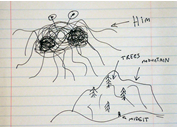 design as themes. There is even a Holy Limerick:
design as themes. There is even a Holy Limerick: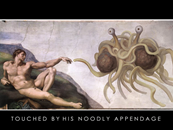 images of the FSM for both devotional and evangelical purposes. The most well-known work is Arne Niklas Jansson’s appropriation of Michelangelo’s The Creation of Adam , in which God has been replaced by the FSM, with a caption that reads “Touched By His Noodly Appendage.” Many followers create illustrations, digital art, and sculptures, and the FSM’s image can be found on everything from t-shirts and mugs, to Christmas decorations, and parade floats.
images of the FSM for both devotional and evangelical purposes. The most well-known work is Arne Niklas Jansson’s appropriation of Michelangelo’s The Creation of Adam , in which God has been replaced by the FSM, with a caption that reads “Touched By His Noodly Appendage.” Many followers create illustrations, digital art, and sculptures, and the FSM’s image can be found on everything from t-shirts and mugs, to Christmas decorations, and parade floats.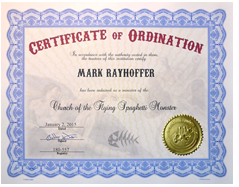 ordination are available for purchase from the official website and there are no official duties that need to be carried out. The website explains:
ordination are available for purchase from the official website and there are no official duties that need to be carried out. The website explains: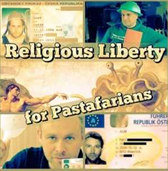 many new religions at the heart of the ongoing debate over what constitutes legitimacy in terms of religious belief, practice, and identity. This debate also covers any implications in social, ethical and legal life. Academic study of Pastafarianism is limited, although growing steadily. It has been called a “parody” religion (Boppana 2009), a “fake” or “pseudo-cult” (Obadia 2015:120) and a “joke” religion (Narizny 2009).
many new religions at the heart of the ongoing debate over what constitutes legitimacy in terms of religious belief, practice, and identity. This debate also covers any implications in social, ethical and legal life. Academic study of Pastafarianism is limited, although growing steadily. It has been called a “parody” religion (Boppana 2009), a “fake” or “pseudo-cult” (Obadia 2015:120) and a “joke” religion (Narizny 2009).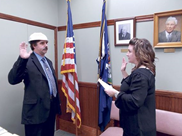 exercise the right to freedom of religious expression. This is frequently the subject of media coverage of the Church of FSM. There are many test cases that have brought the religious freedoms of Pastafarians into conflict with the law, and outcomes have varied in different countries and circumstances. At first, Pastafarians in multiple countries including, Austria, the USA, Australia, New Zealand, and Russia, attempted to have their photograph for their drivers licence (or other legal documents) taken while wearing a colander on their head. Their justification was that the colander is a part of their religious clothing, and any refusal impinges on their freedom to express their religious identity. Most cases have been successful, although Russian authorities have responded that if Andrei Filin, the first Russian to have a colander hat on his licence, is found driving without the colander his licence will be revoked (Mehta 2016). Such civic engagement has been expanded. In 2014, New York Town Council member Christopher Schaeffer was sworn in to office whilst wearing a colander on his head (Larson 2014). In the same year, an American prison inmate, Stephen Cavanaugh, sued the State of Nebraska, claiming that his rights had been violated in prison because he was not allowed to dress in full pirate regalia and meet for worship and fellowship (Millhiser 2014). Again in 2014, Pastafarians in Poland were allowed to register as an official religion, after a previous ban was overturned in the courts (Nelson 2014). Also in 2014, Australian Dan Guenther applied to teach Pastafarianism as religious education in primary schools (de Brito 2014). By 2015, the government of New Zealand had approved the Church of FSM to conduct legal marriage ceremonies (Edens 2015).
exercise the right to freedom of religious expression. This is frequently the subject of media coverage of the Church of FSM. There are many test cases that have brought the religious freedoms of Pastafarians into conflict with the law, and outcomes have varied in different countries and circumstances. At first, Pastafarians in multiple countries including, Austria, the USA, Australia, New Zealand, and Russia, attempted to have their photograph for their drivers licence (or other legal documents) taken while wearing a colander on their head. Their justification was that the colander is a part of their religious clothing, and any refusal impinges on their freedom to express their religious identity. Most cases have been successful, although Russian authorities have responded that if Andrei Filin, the first Russian to have a colander hat on his licence, is found driving without the colander his licence will be revoked (Mehta 2016). Such civic engagement has been expanded. In 2014, New York Town Council member Christopher Schaeffer was sworn in to office whilst wearing a colander on his head (Larson 2014). In the same year, an American prison inmate, Stephen Cavanaugh, sued the State of Nebraska, claiming that his rights had been violated in prison because he was not allowed to dress in full pirate regalia and meet for worship and fellowship (Millhiser 2014). Again in 2014, Pastafarians in Poland were allowed to register as an official religion, after a previous ban was overturned in the courts (Nelson 2014). Also in 2014, Australian Dan Guenther applied to teach Pastafarianism as religious education in primary schools (de Brito 2014). By 2015, the government of New Zealand had approved the Church of FSM to conduct legal marriage ceremonies (Edens 2015).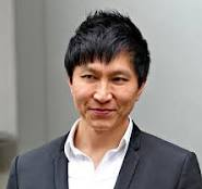 diamond trader. He graduated with a degree in Computer and Information Sciences from the National University of Singapore in 1988. Upon graduation, he worked for a short time in a local publishing house. In 1989, Kong became a staff evangelist with Christ for Asia, a mission organization based in the Philippines. When an opportunity for Kong to pioneer a new church in Singapore arose, Kong returned to Singapore and helped set up a new congregation of twenty youths, with the support and encouragement of some senior pastors in Singapore. On May 7, 1989, City Harvest Church was founded as a department (known as Ekklesia Ministry) of Bethany Christian Centre (Assemblies of God).
diamond trader. He graduated with a degree in Computer and Information Sciences from the National University of Singapore in 1988. Upon graduation, he worked for a short time in a local publishing house. In 1989, Kong became a staff evangelist with Christ for Asia, a mission organization based in the Philippines. When an opportunity for Kong to pioneer a new church in Singapore arose, Kong returned to Singapore and helped set up a new congregation of twenty youths, with the support and encouragement of some senior pastors in Singapore. On May 7, 1989, City Harvest Church was founded as a department (known as Ekklesia Ministry) of Bethany Christian Centre (Assemblies of God). Kong. Ho was born on June 2, 1972 in Singapore. [Image at right] The couple got married in 1992 and Ho became involved in the church from its inception. She was one of the youth leaders that helped Kong establish the CHC church. She served as the director of the church’s community services and also led its Creative Department from 1992 until late 2000. In 2004, in recognition of her contributions to the building and betterment of schools and educational facilities in China, Sun was named an “Ambassador of Love” by the Children and Youth Foundation of China.
Kong. Ho was born on June 2, 1972 in Singapore. [Image at right] The couple got married in 1992 and Ho became involved in the church from its inception. She was one of the youth leaders that helped Kong establish the CHC church. She served as the director of the church’s community services and also led its Creative Department from 1992 until late 2000. In 2004, in recognition of her contributions to the building and betterment of schools and educational facilities in China, Sun was named an “Ambassador of Love” by the Children and Youth Foundation of China.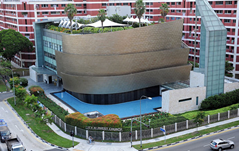 is at the top of the hierarchy, with all spiritual and practical authority, and below him are other ordained pastors and pastoral staff (there are twenty-two pastors and assistant pastors and sixty-five full-time staff) and hundreds of executive members (these are lay leaders, including senior members and leaders of cell groups), who interact most frequently with the congregations. But the ultimate authority resides with Kong. According to Chan (forthcoming), the church has no concrete church polity as it is still in the stage of development. For example, when responding to questions about ordination, the church leaders told Chan that there is no established rule or regulation on who is able to be ordained.
is at the top of the hierarchy, with all spiritual and practical authority, and below him are other ordained pastors and pastoral staff (there are twenty-two pastors and assistant pastors and sixty-five full-time staff) and hundreds of executive members (these are lay leaders, including senior members and leaders of cell groups), who interact most frequently with the congregations. But the ultimate authority resides with Kong. According to Chan (forthcoming), the church has no concrete church polity as it is still in the stage of development. For example, when responding to questions about ordination, the church leaders told Chan that there is no established rule or regulation on who is able to be ordained.